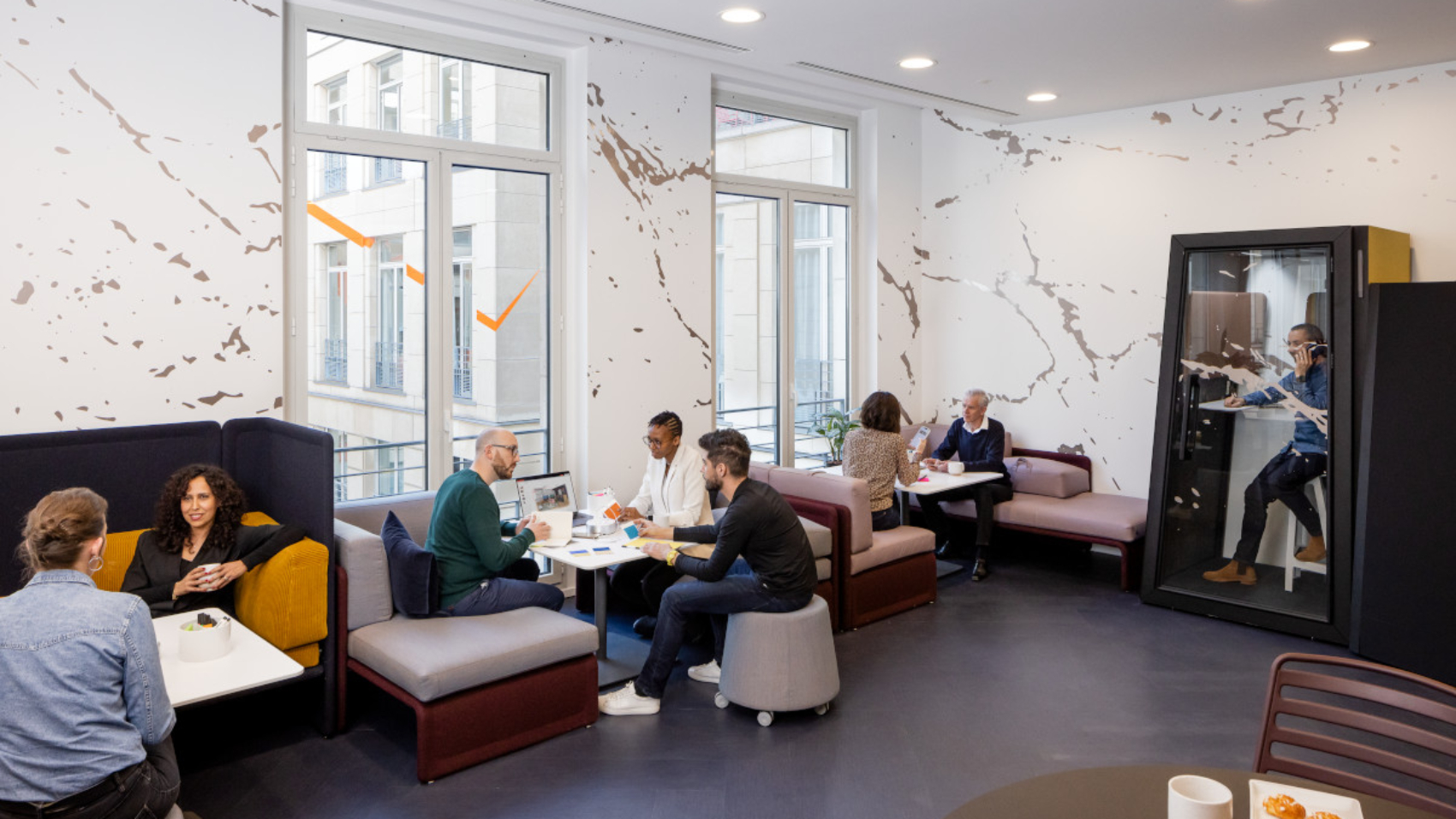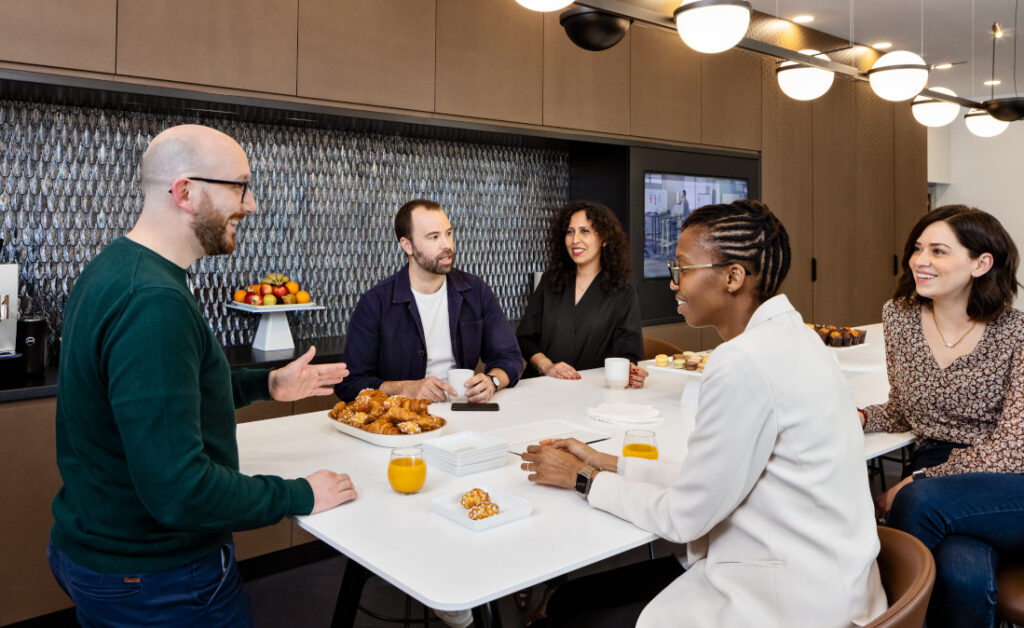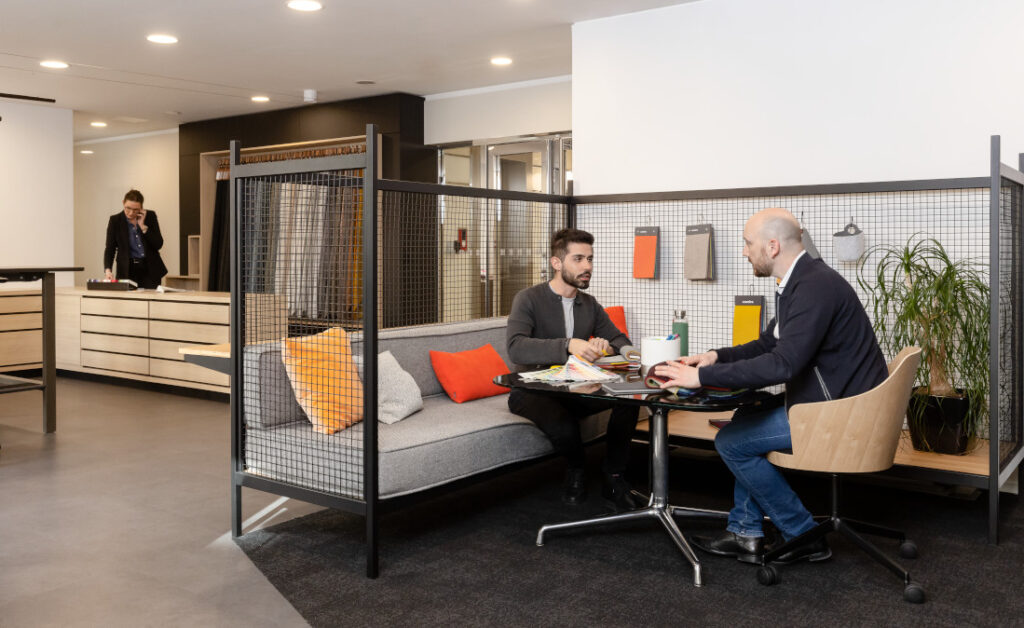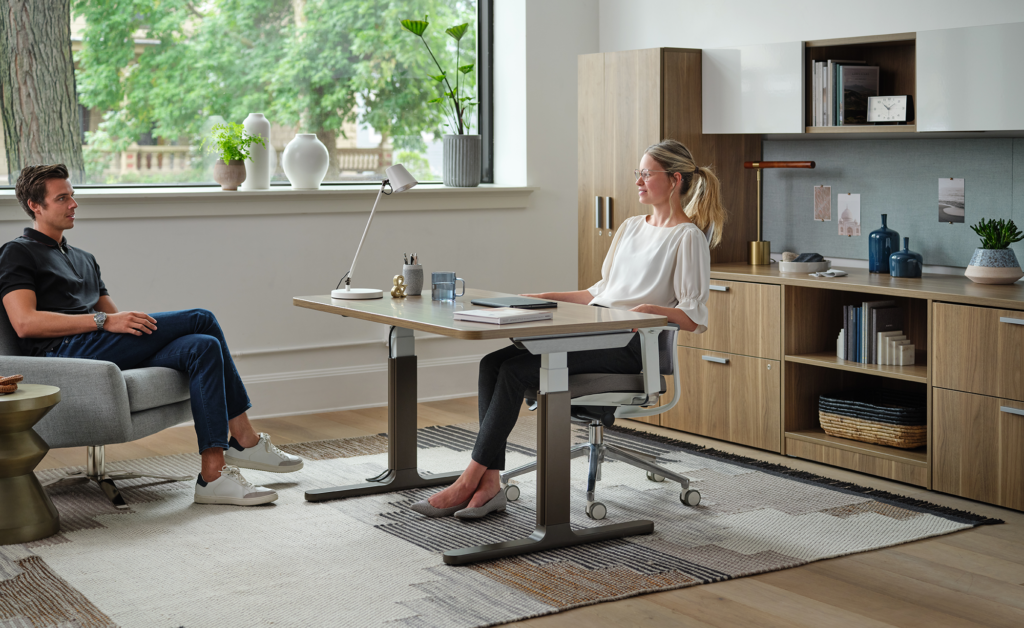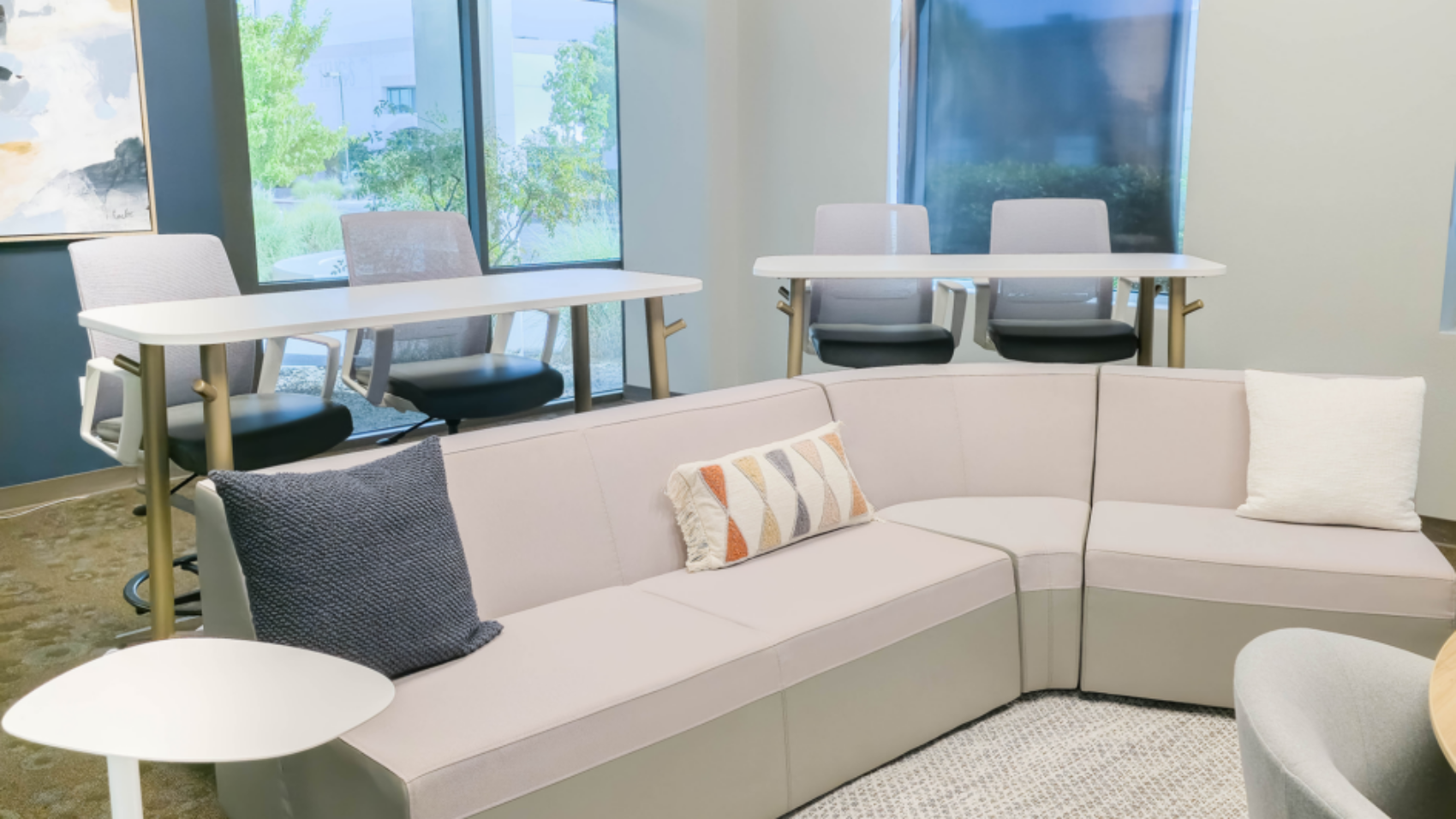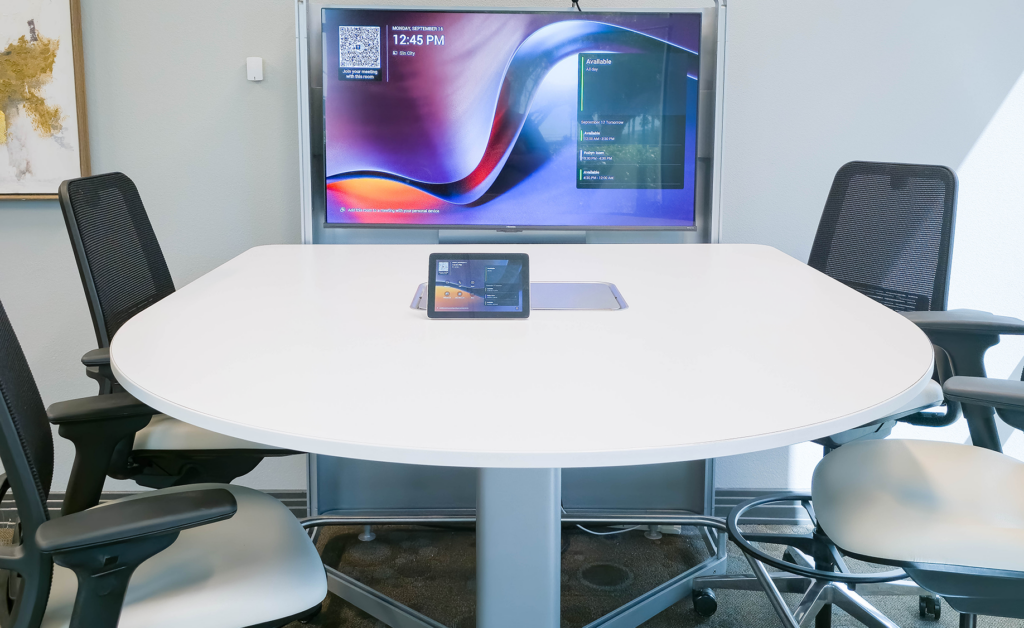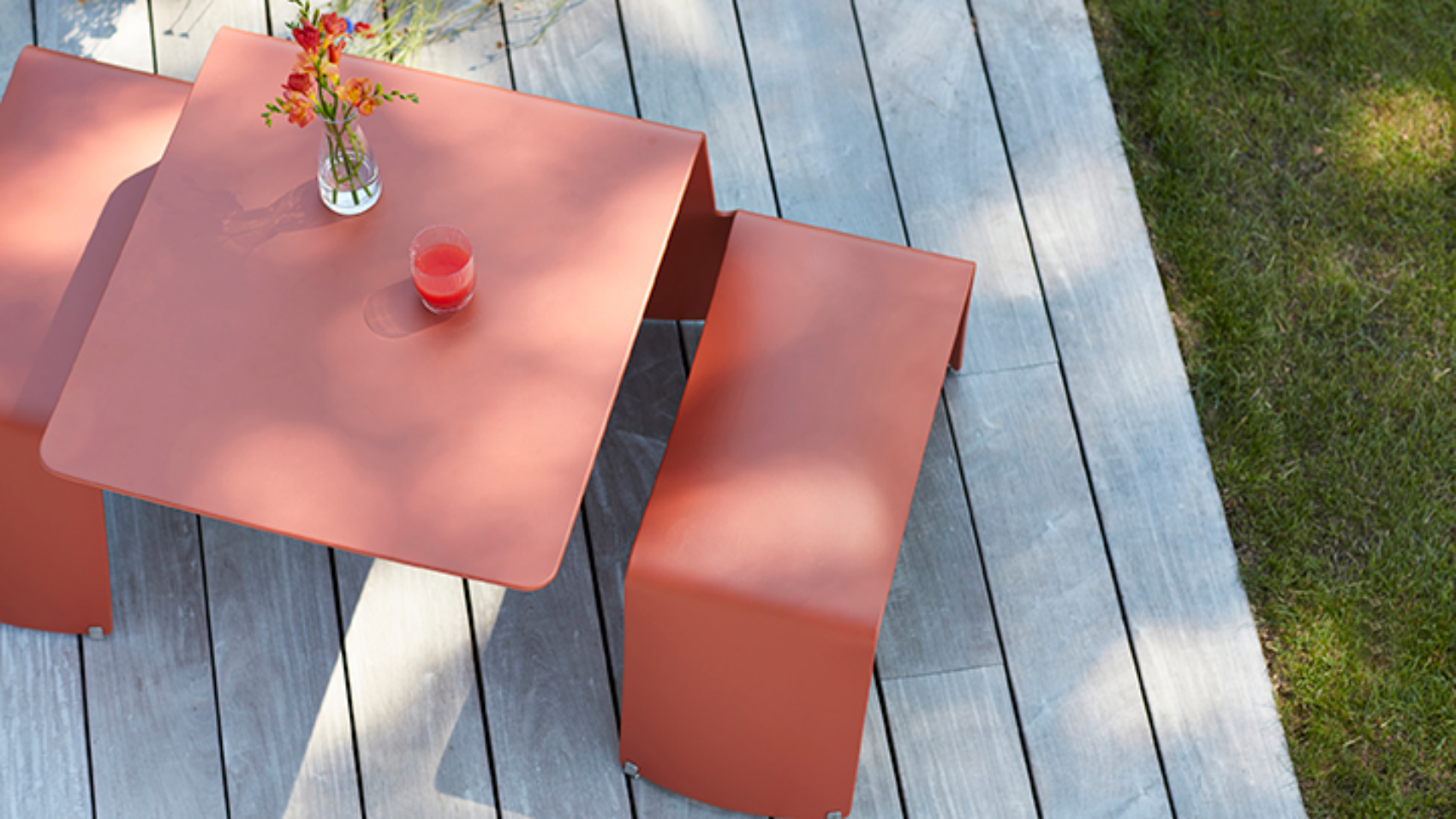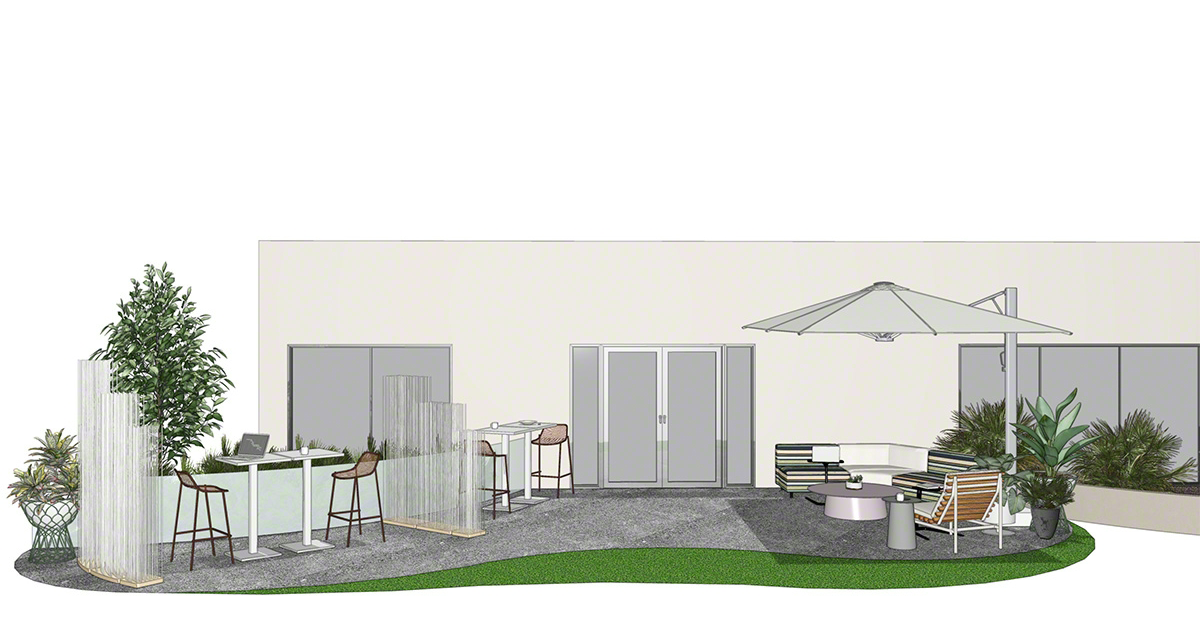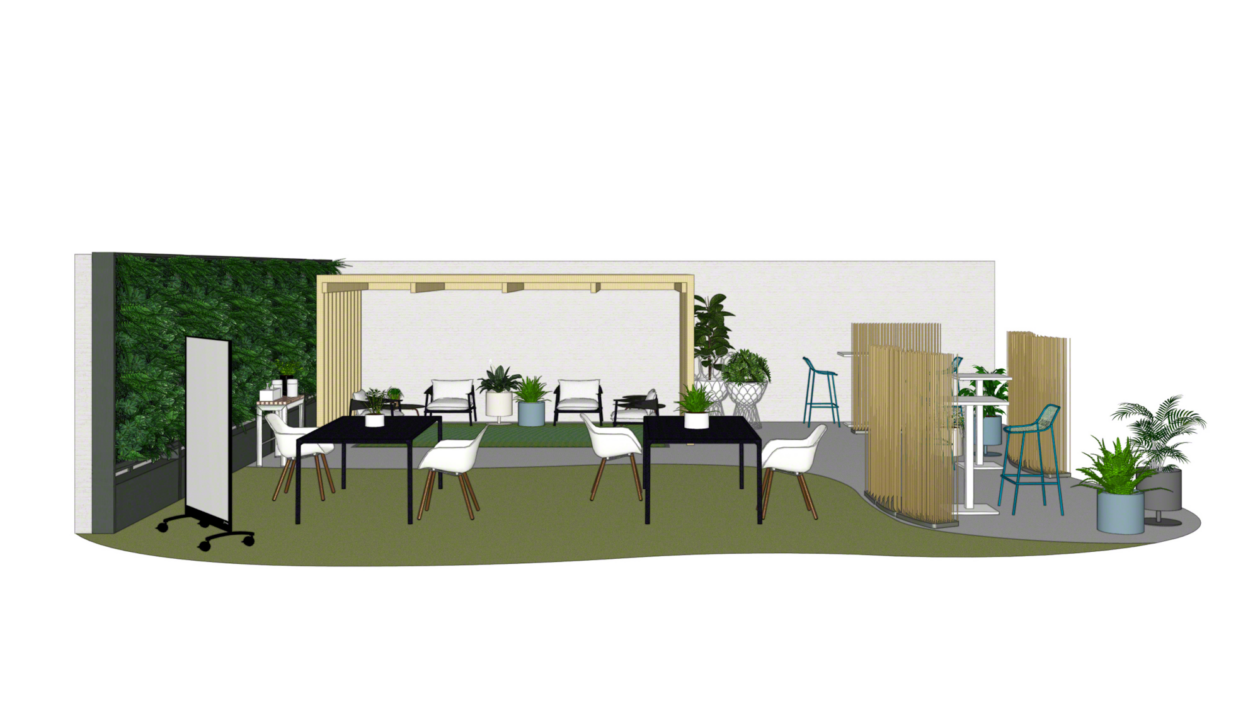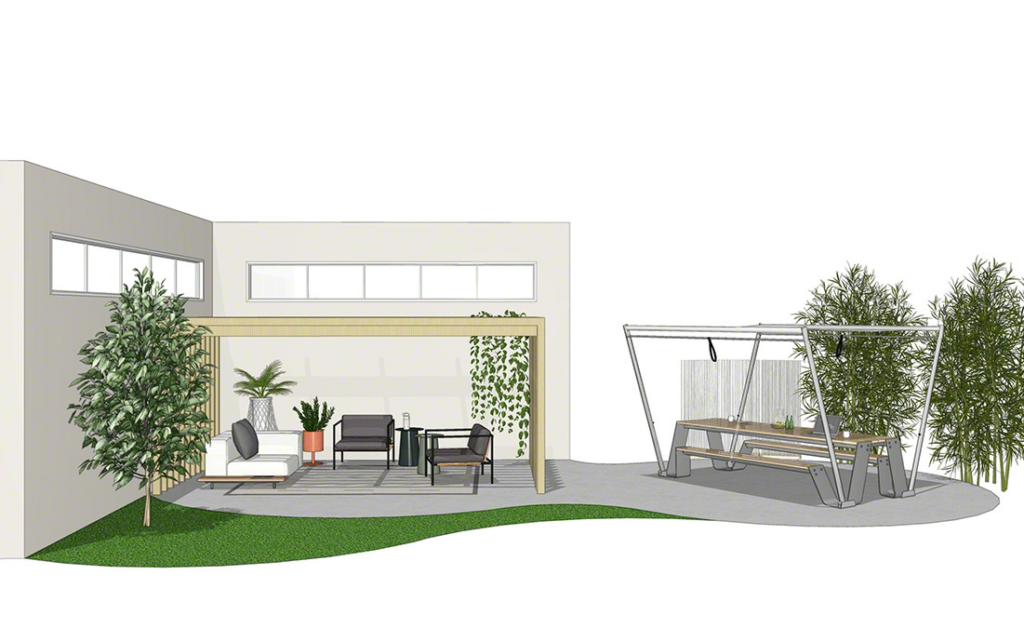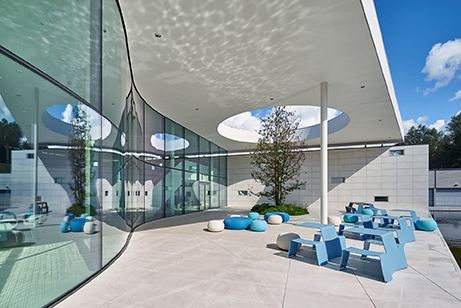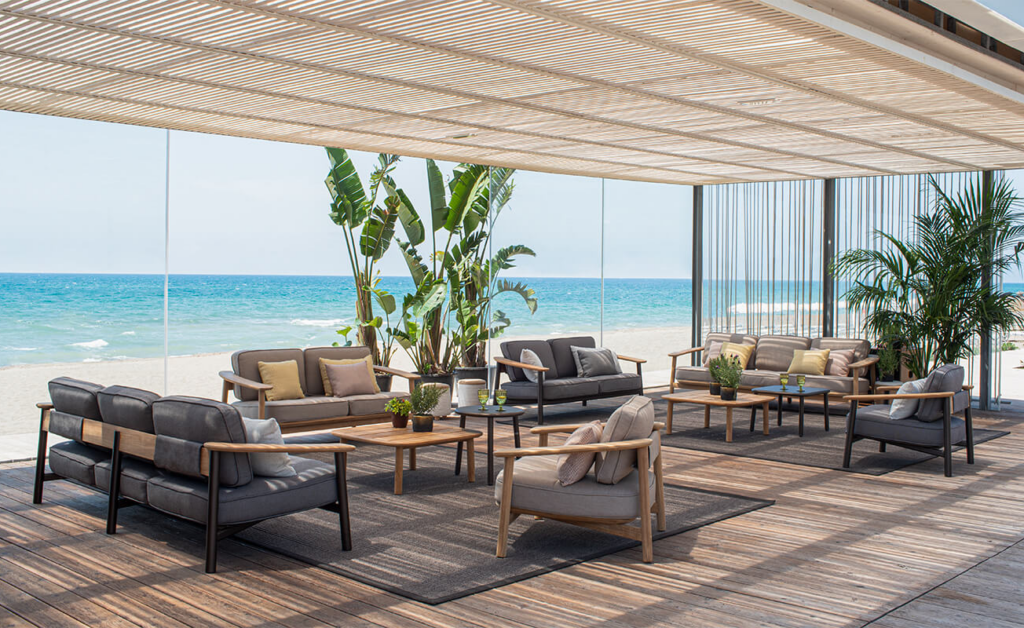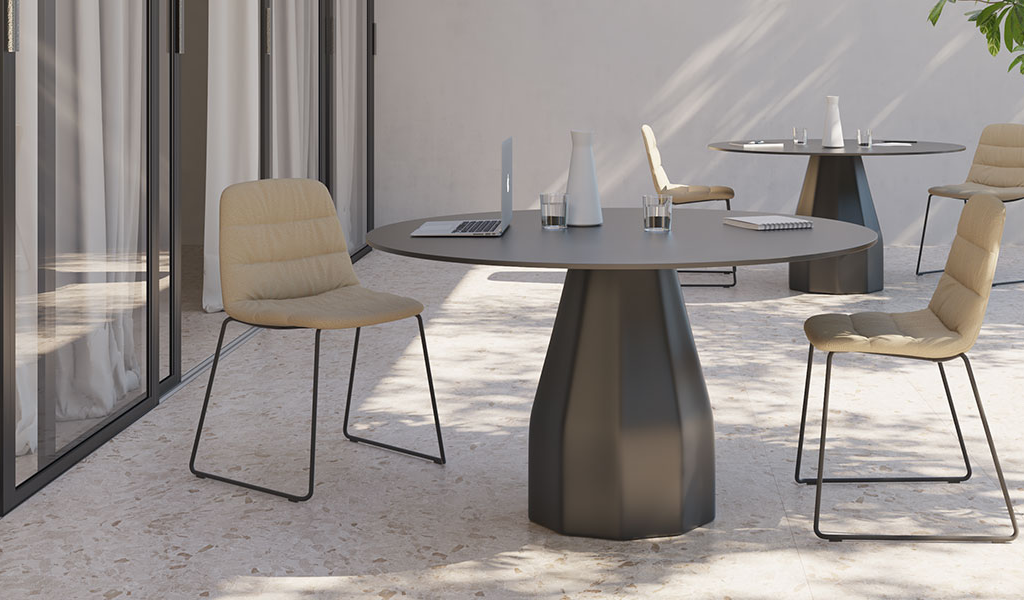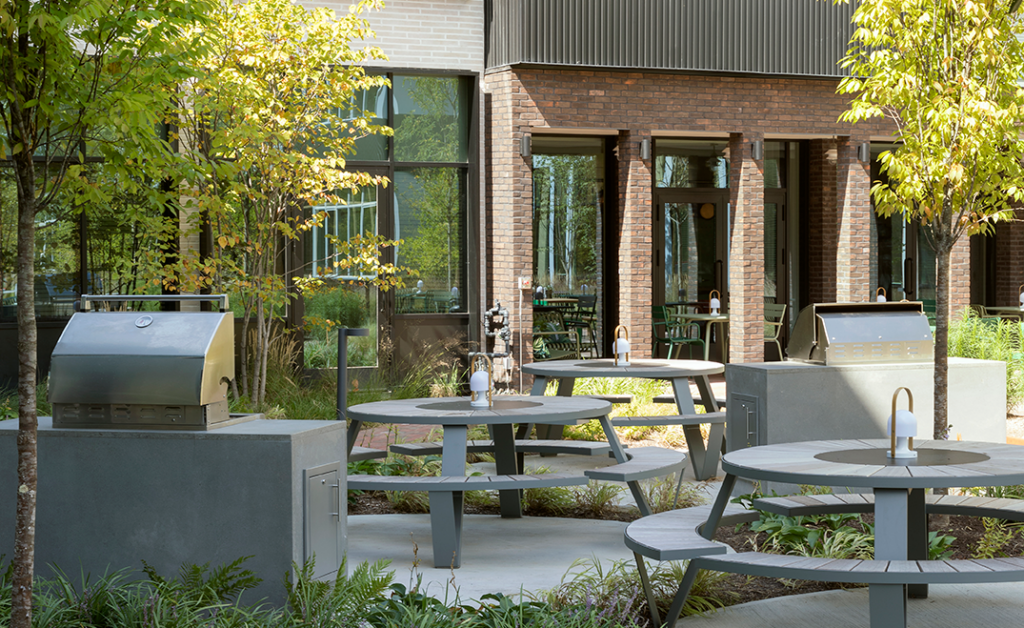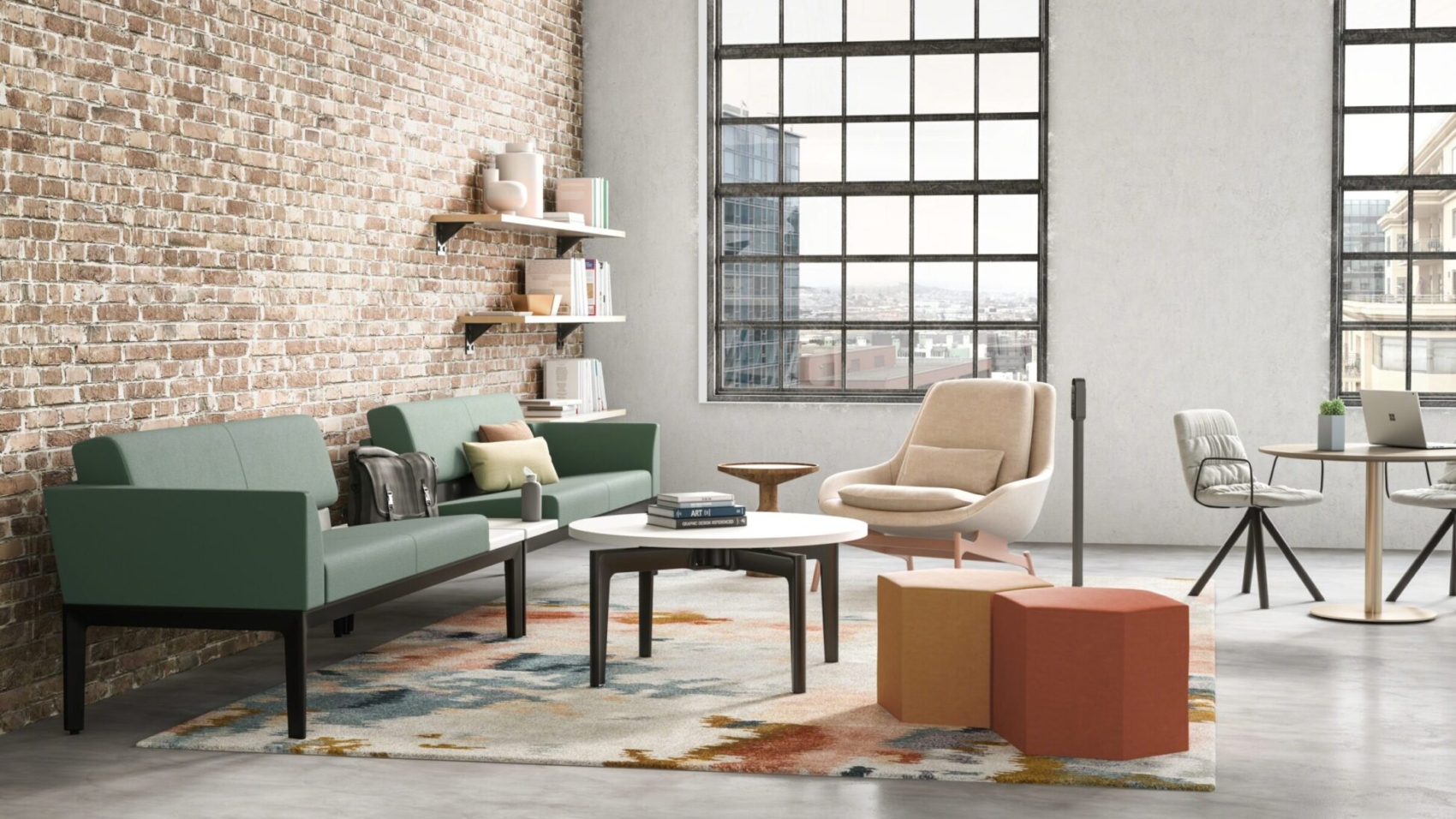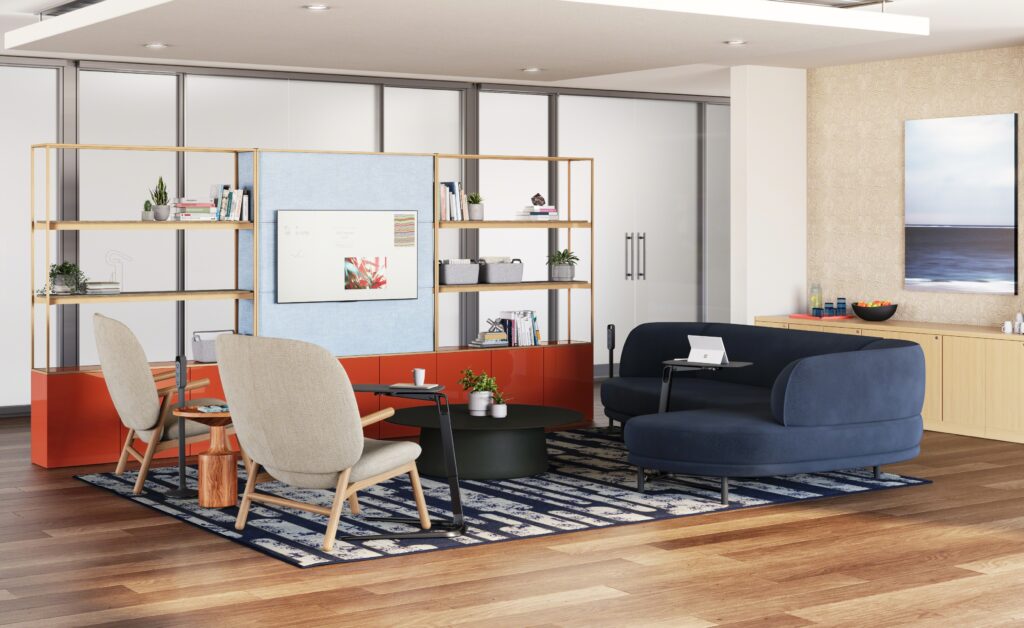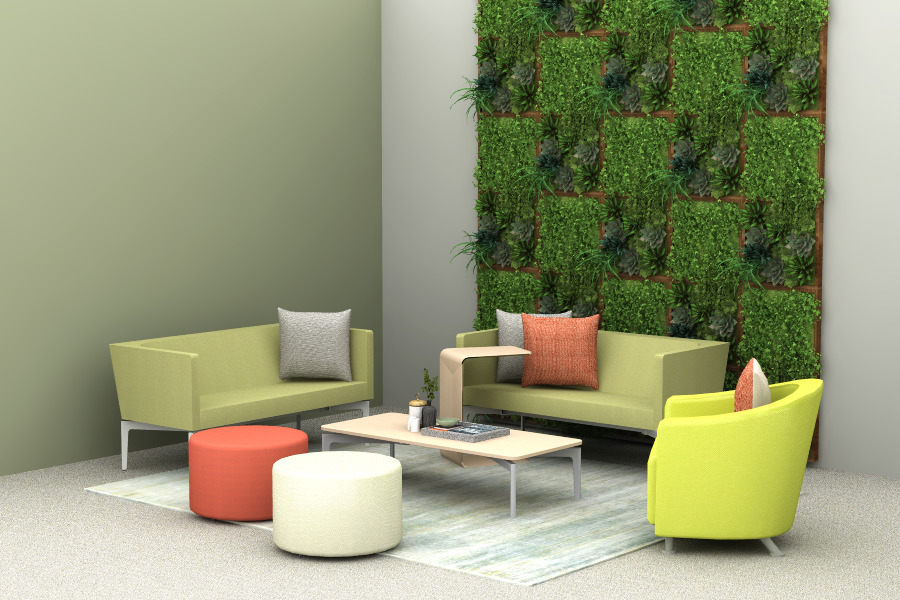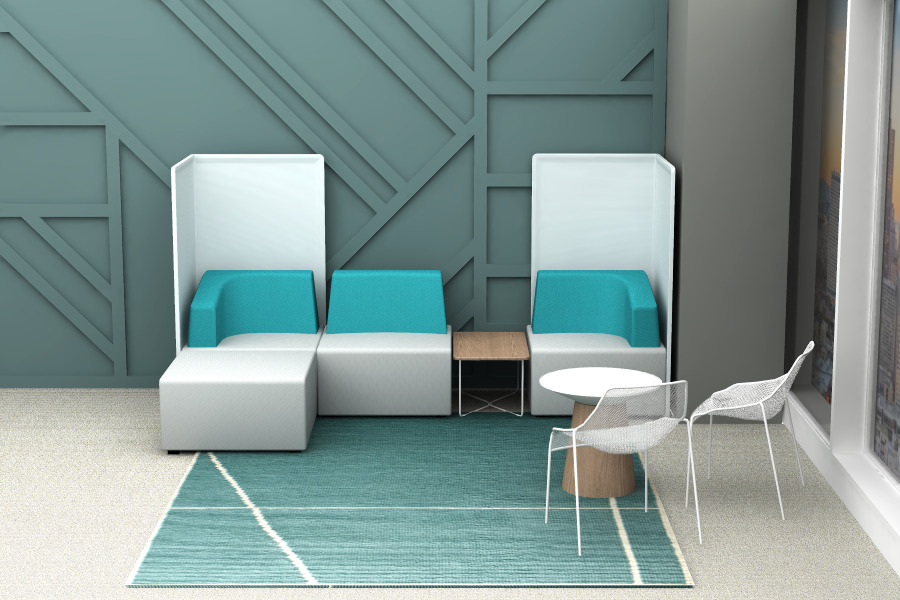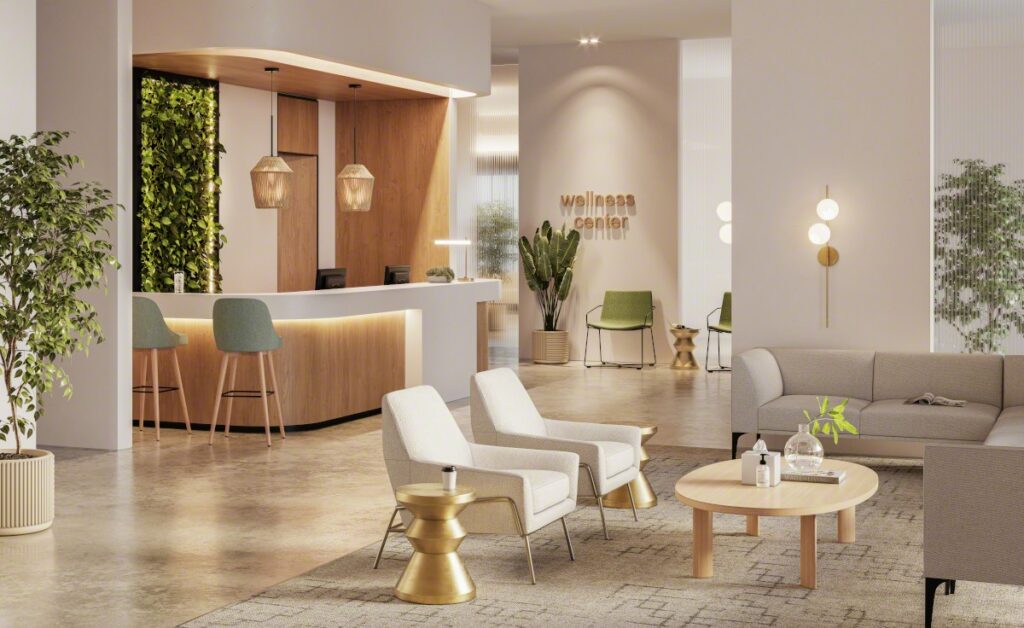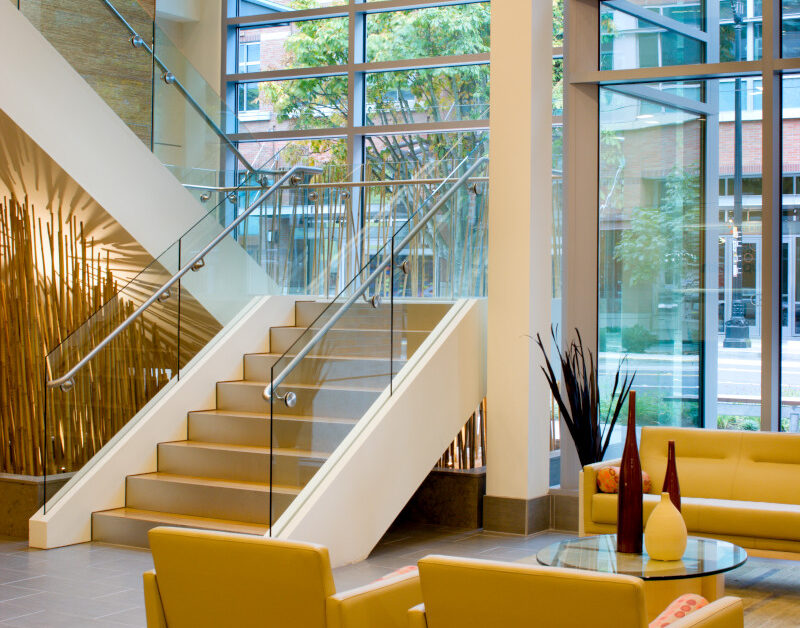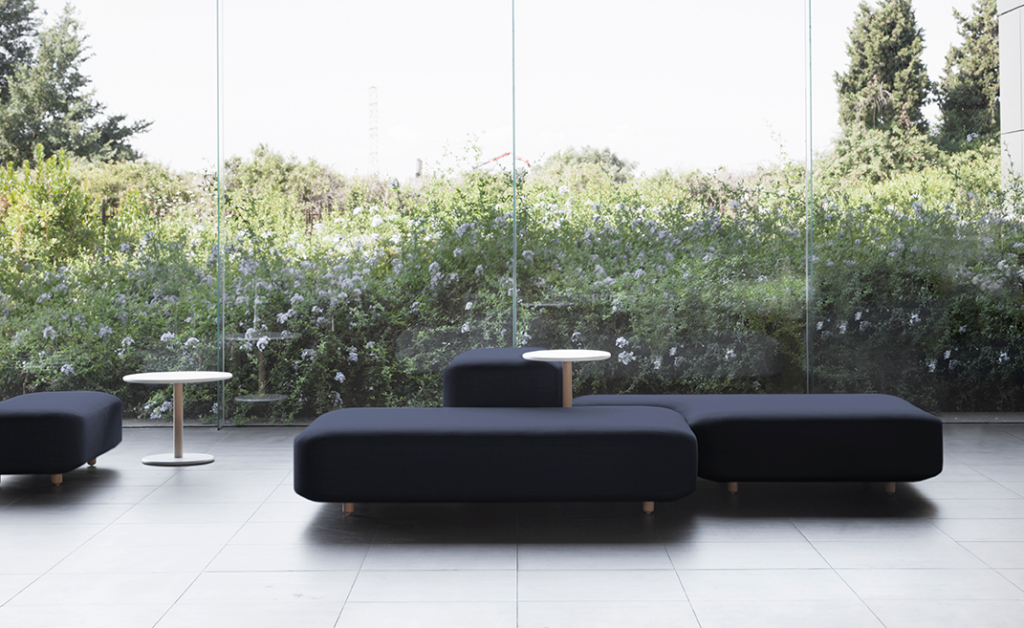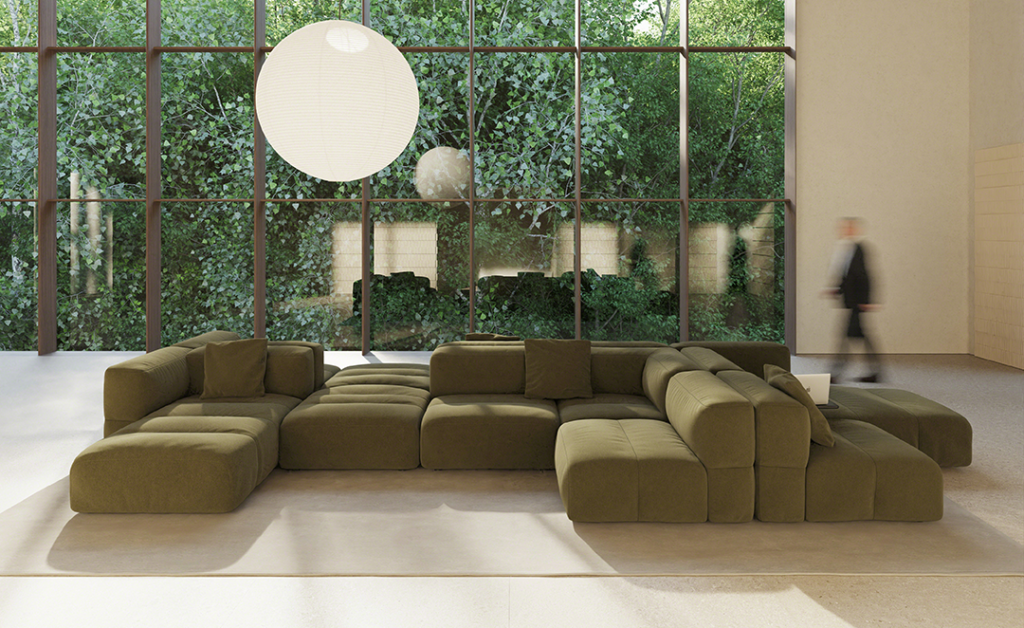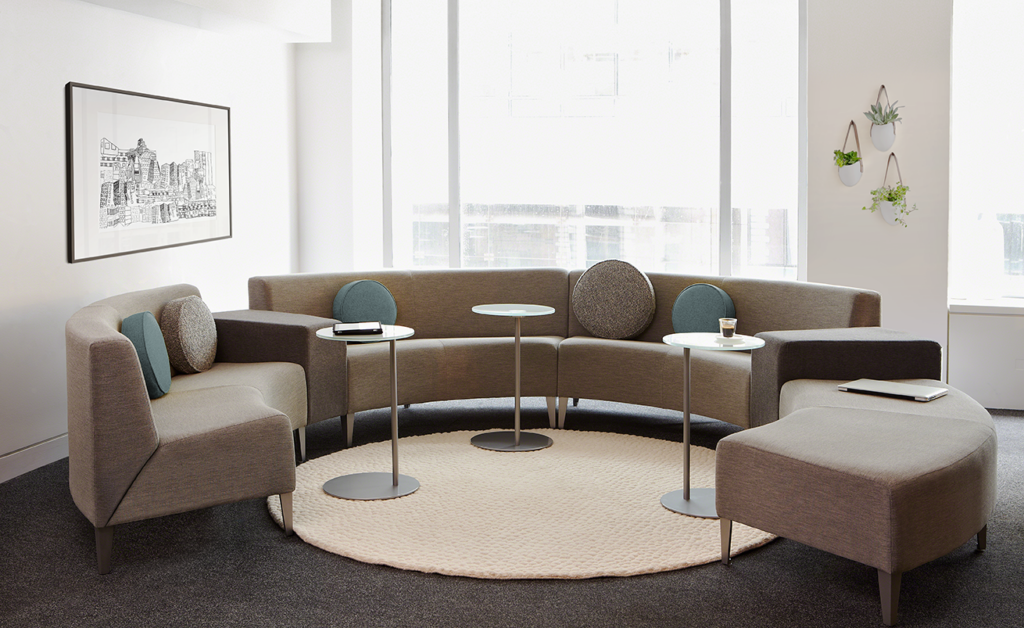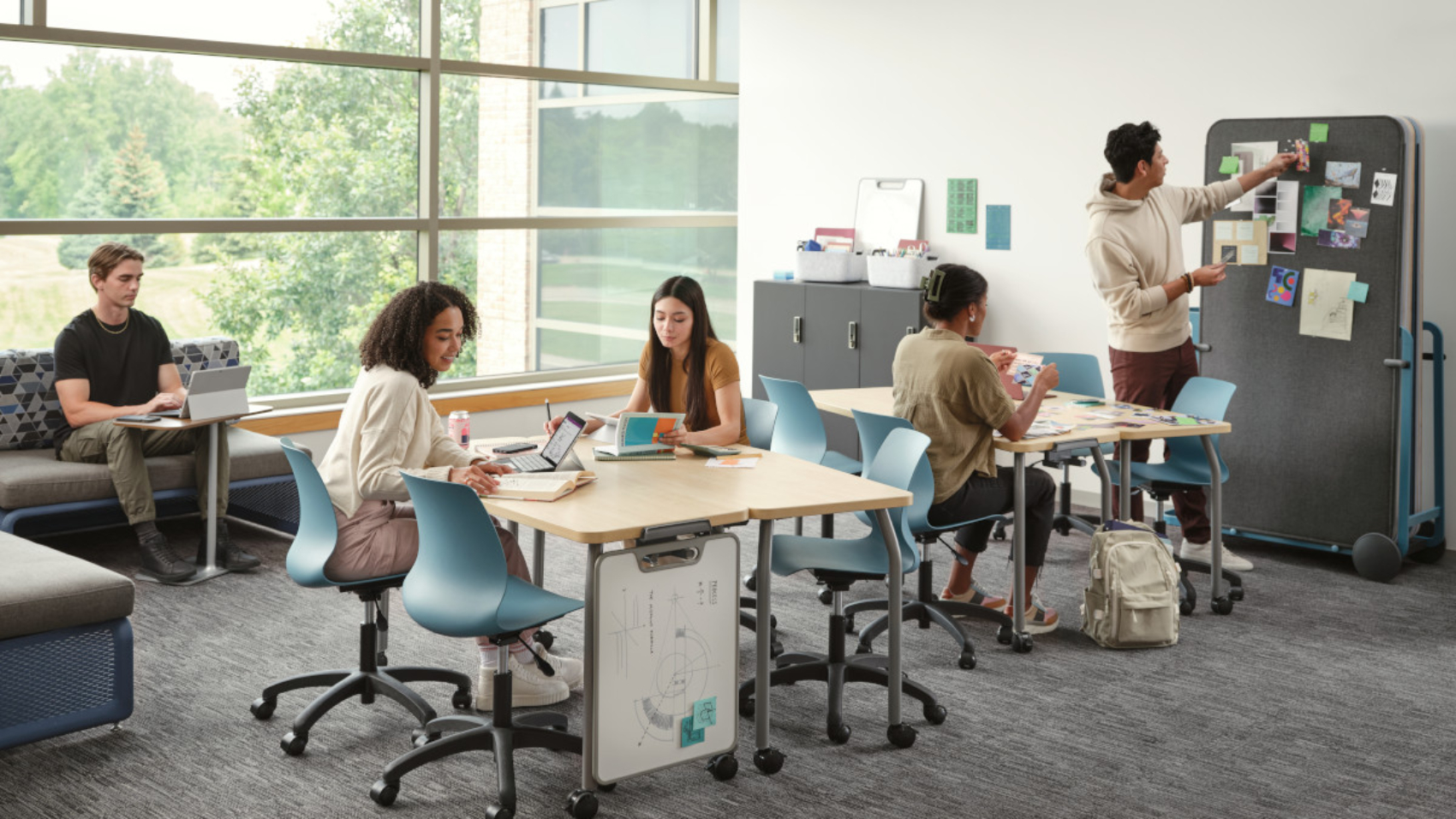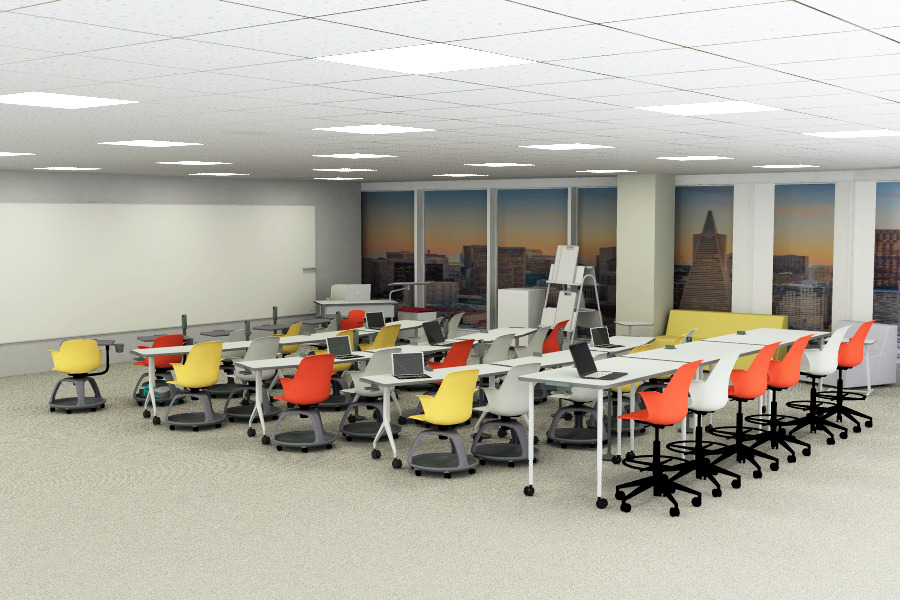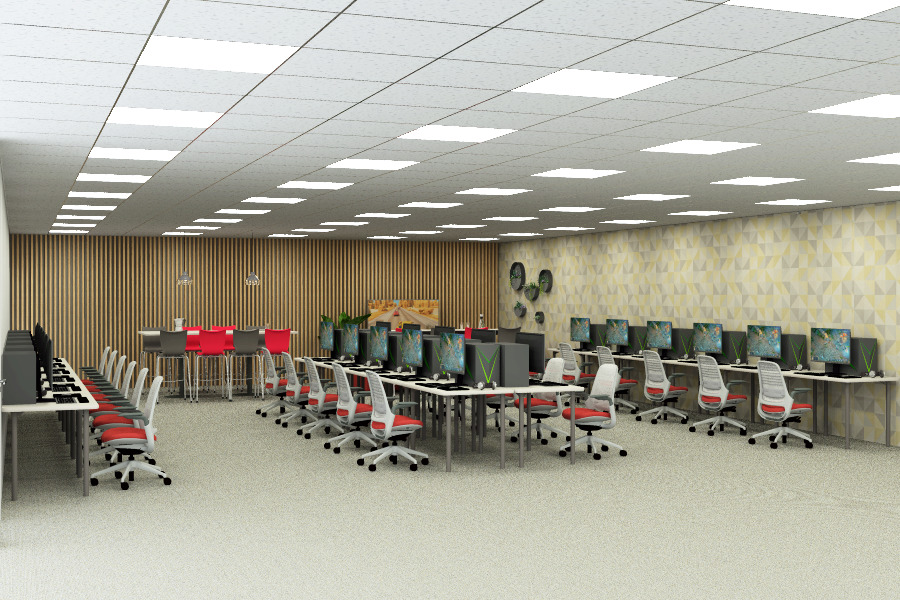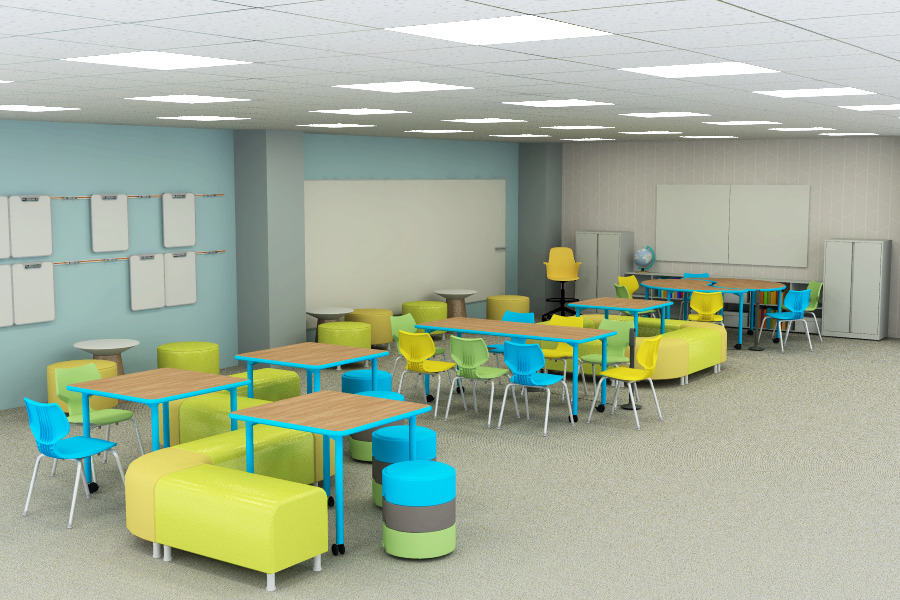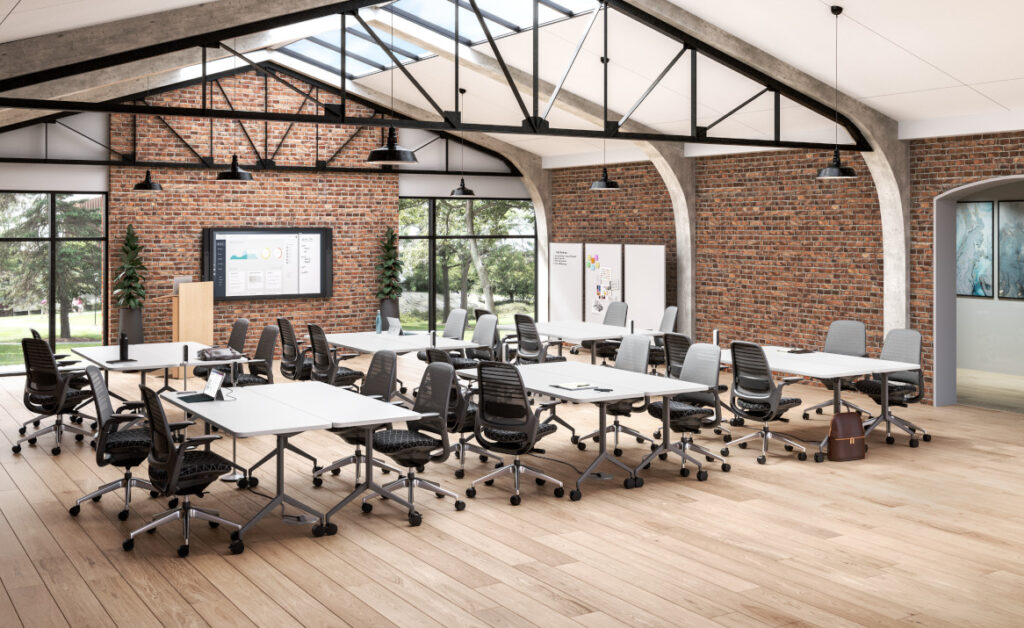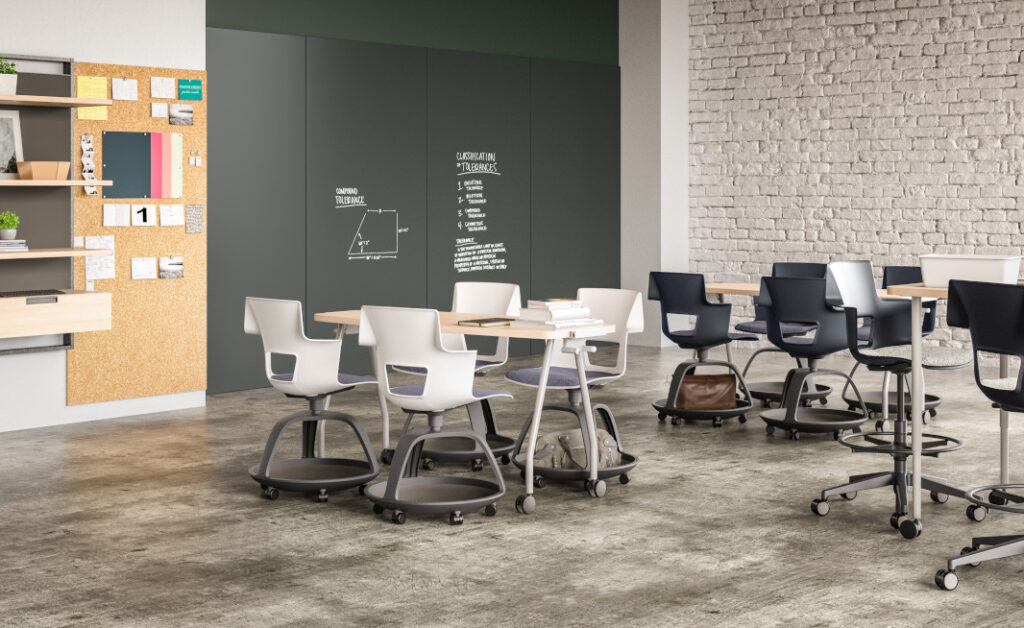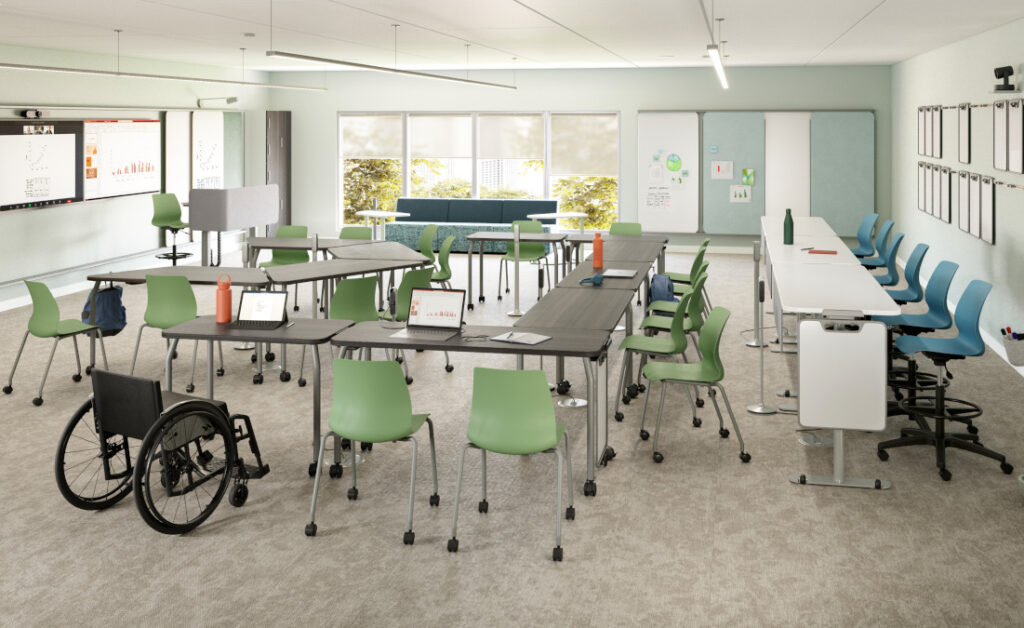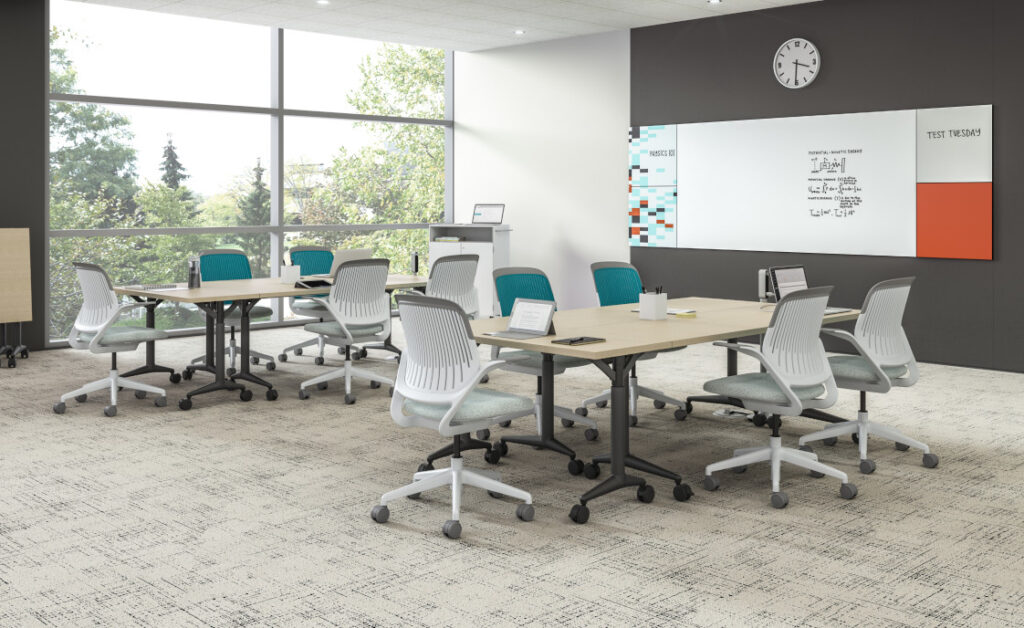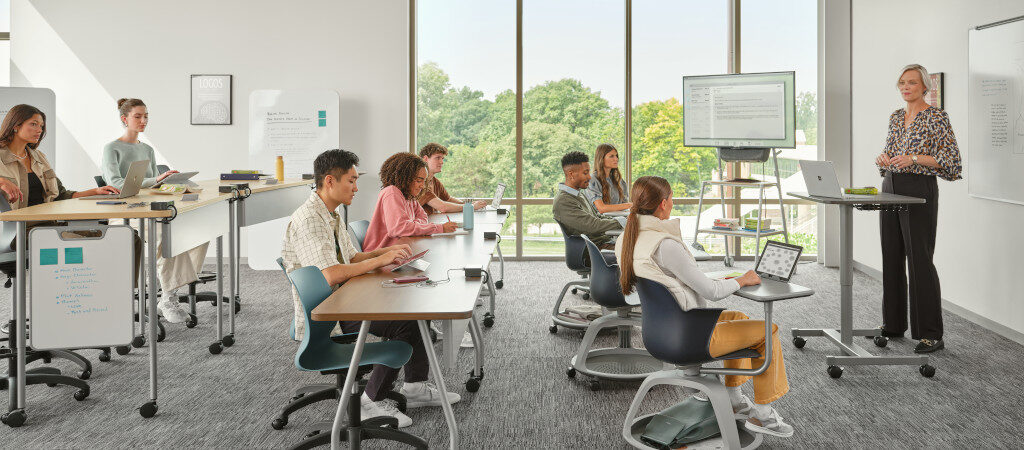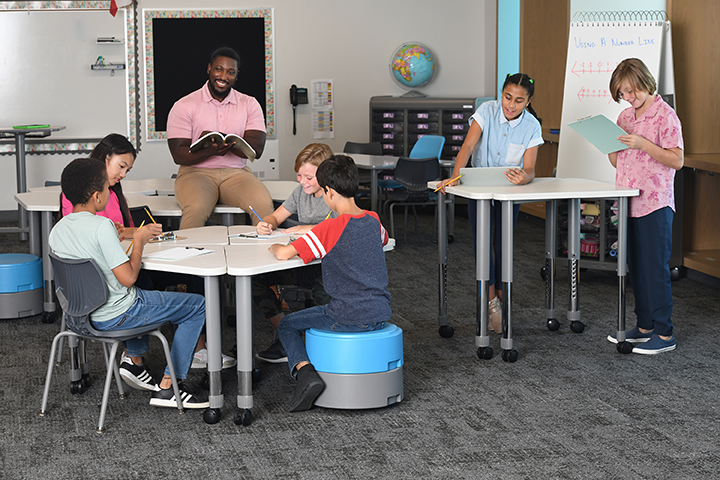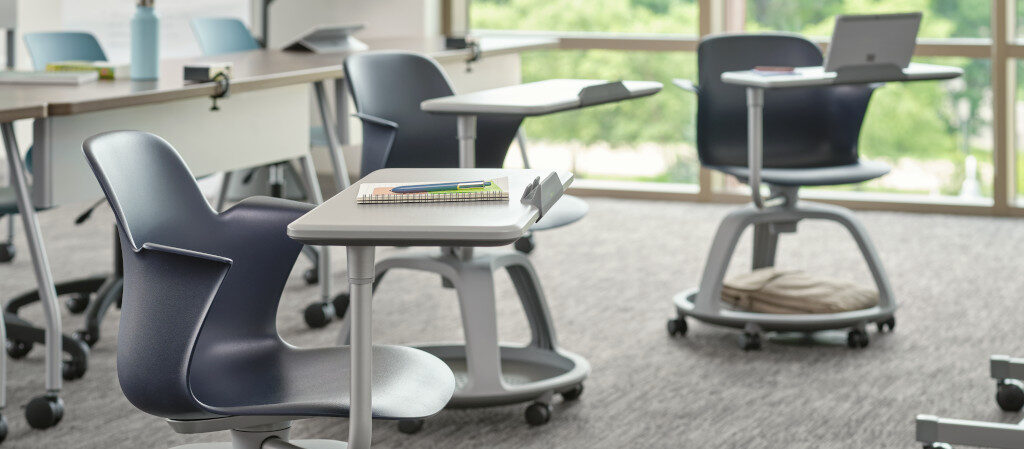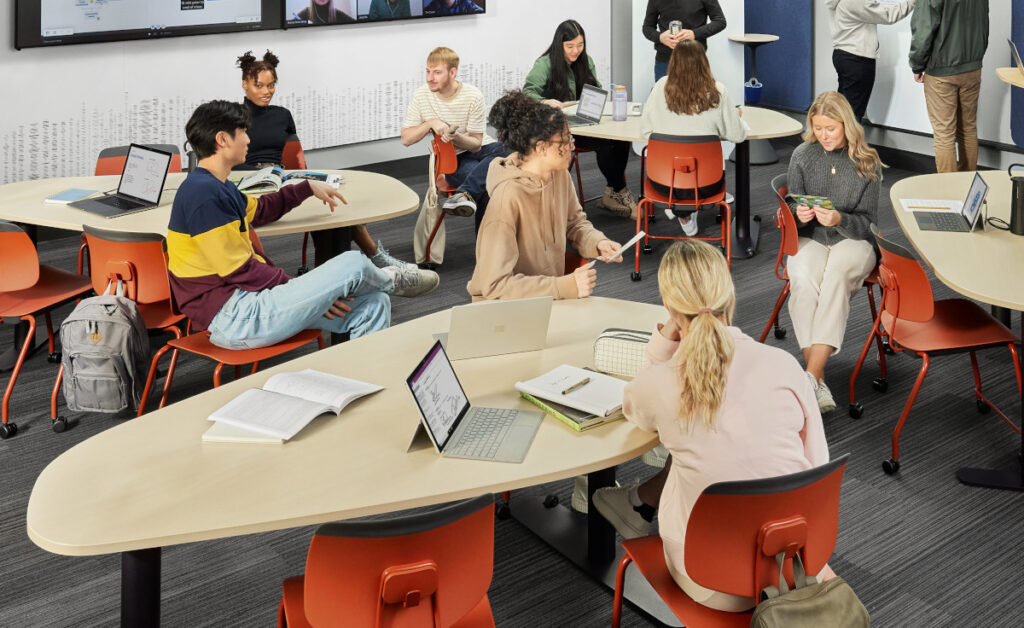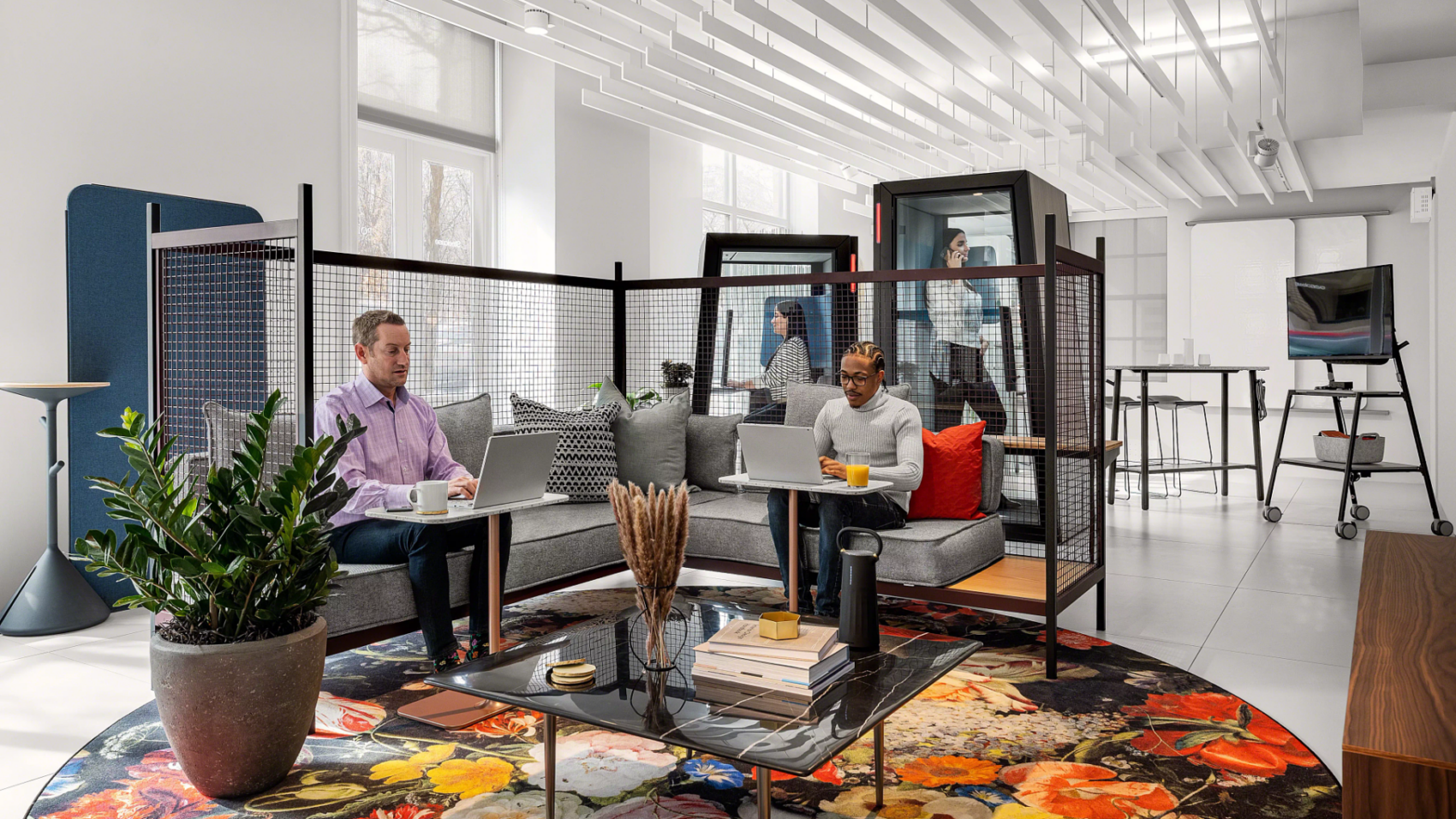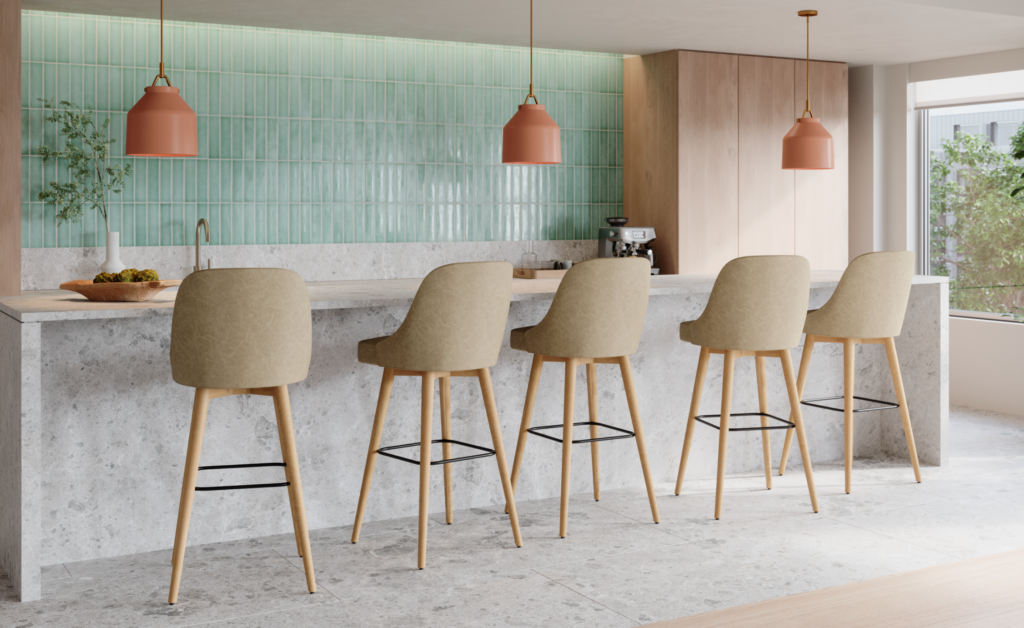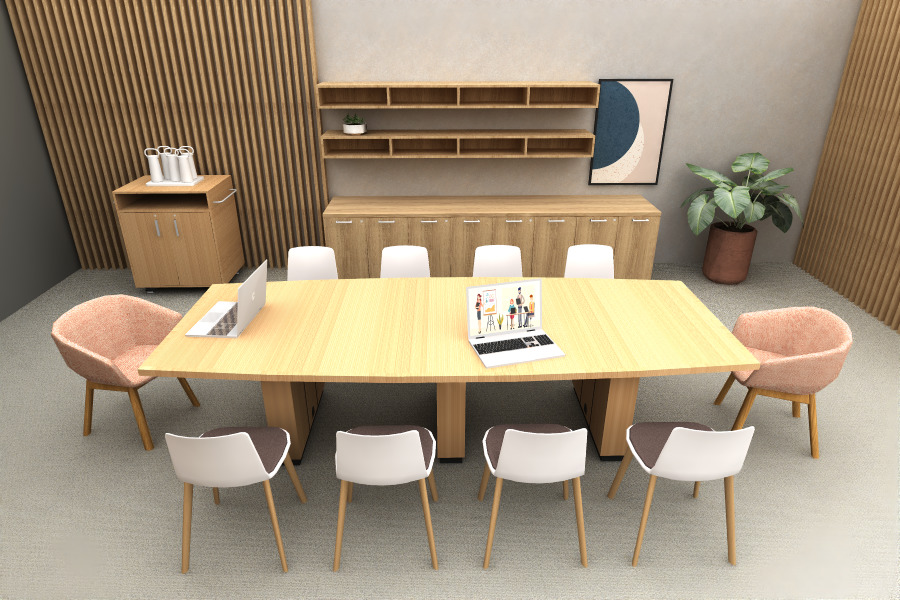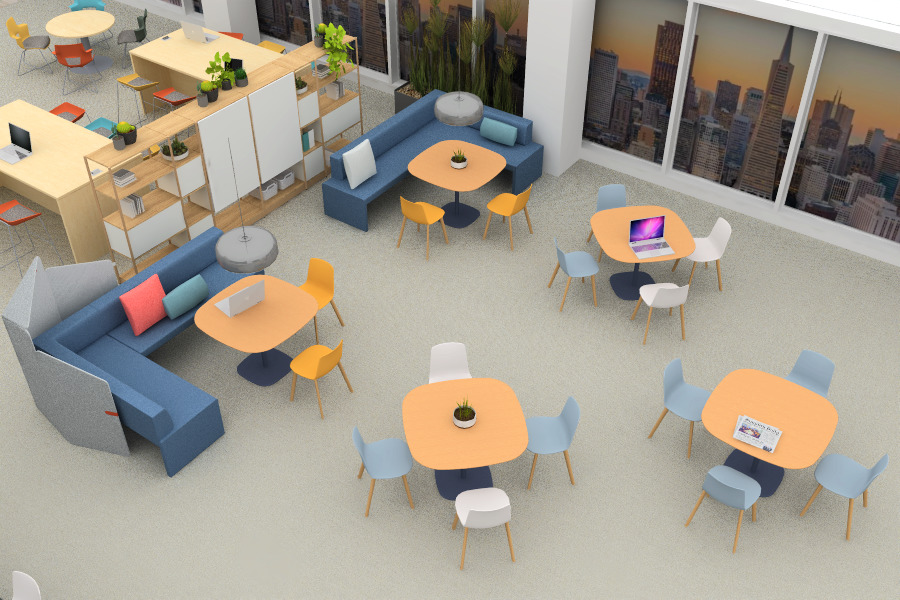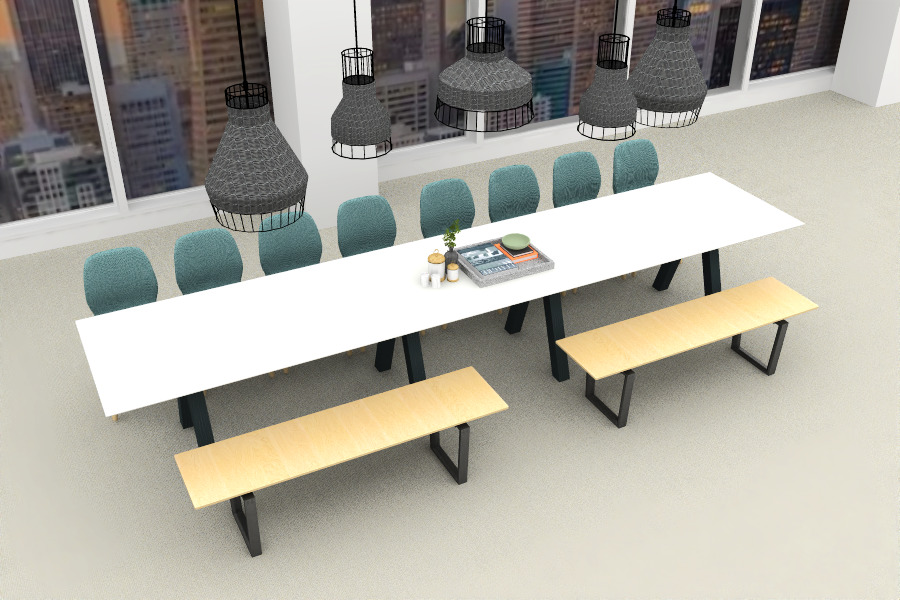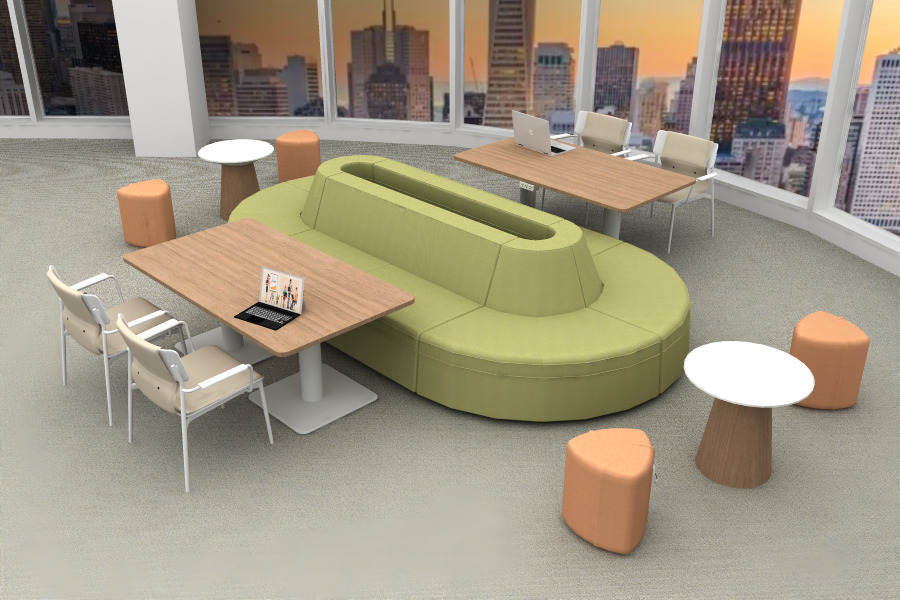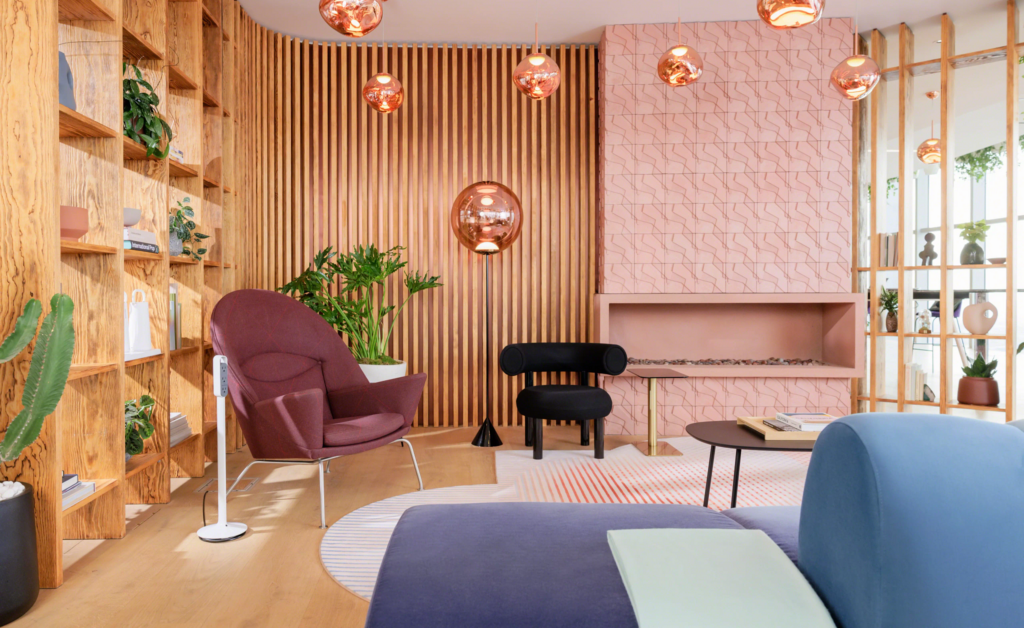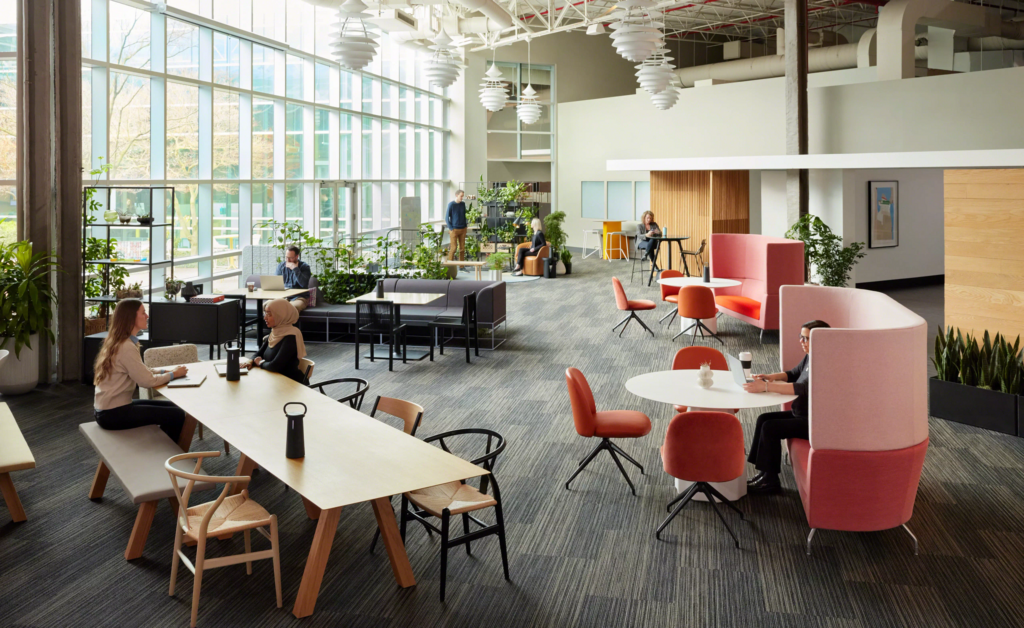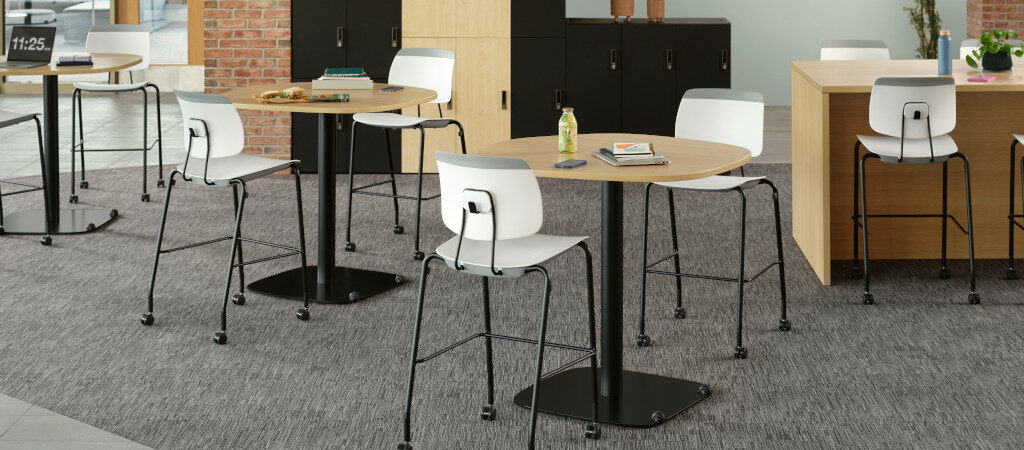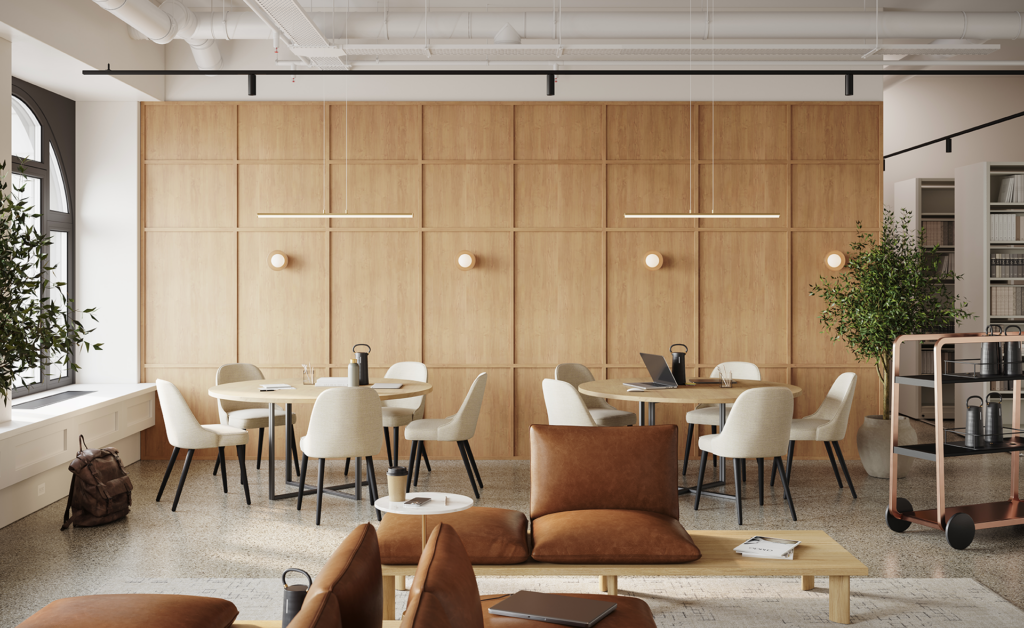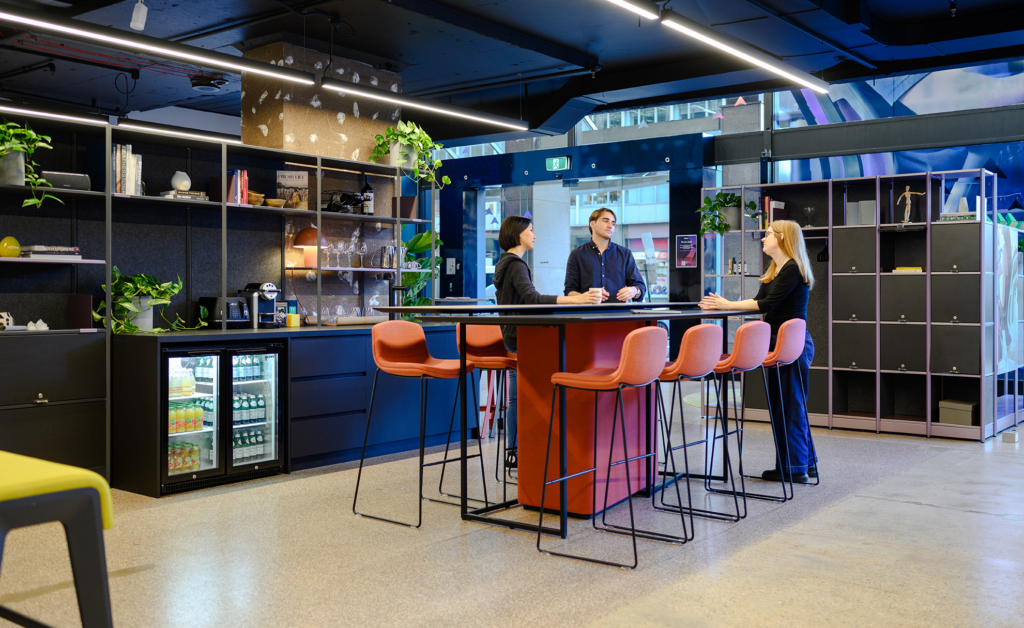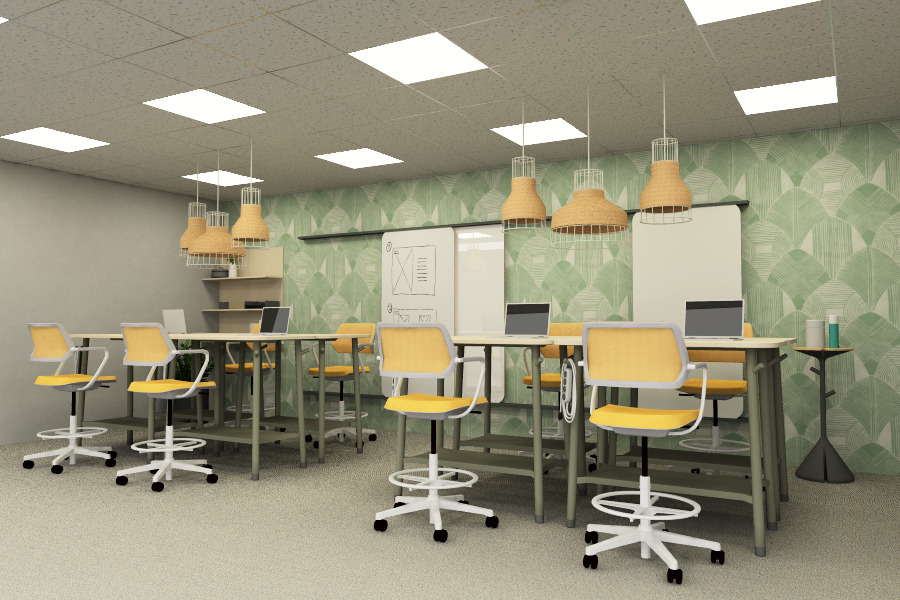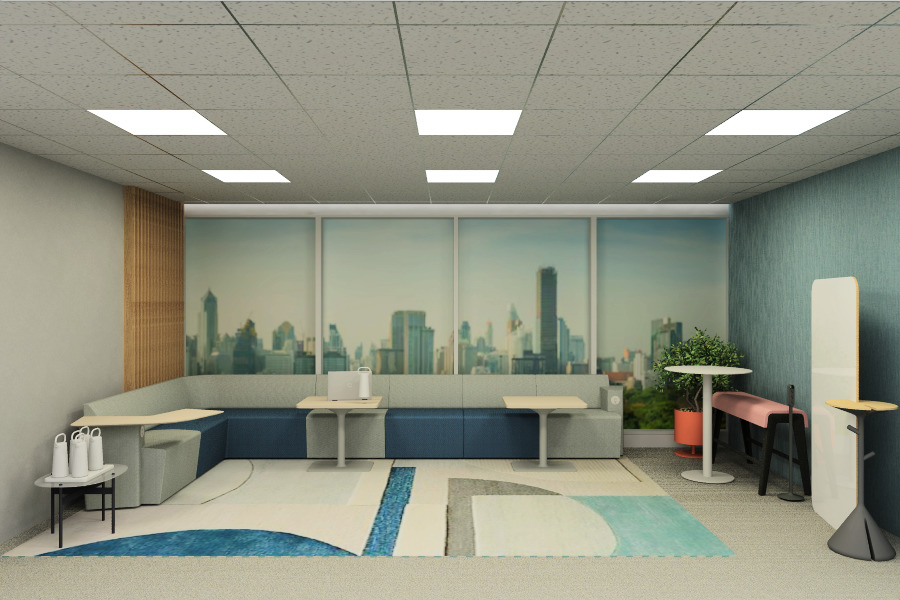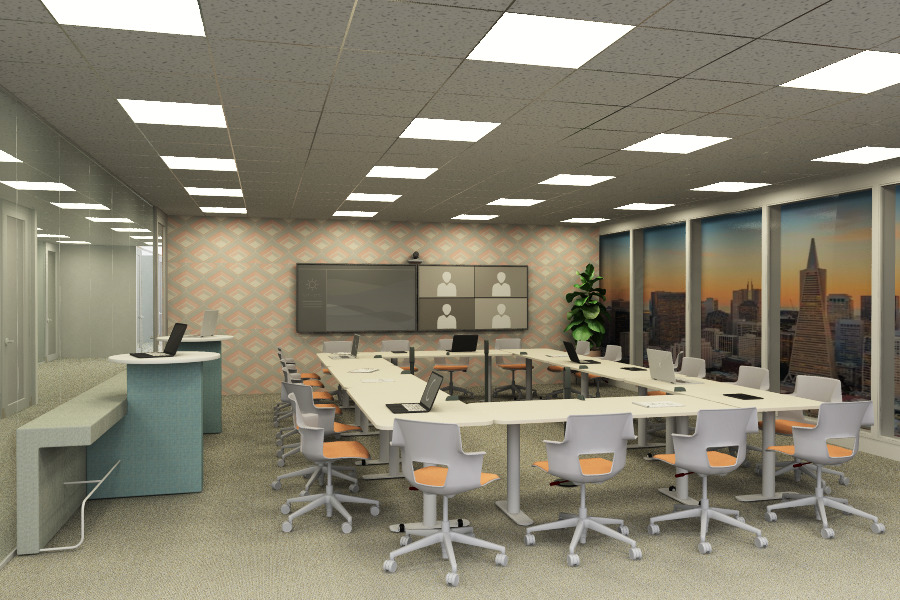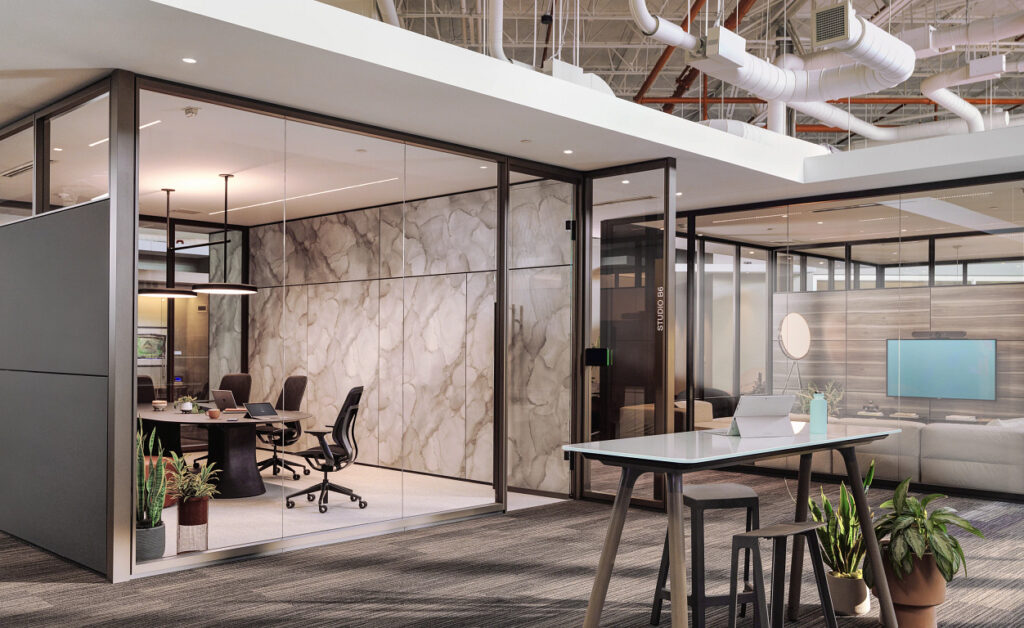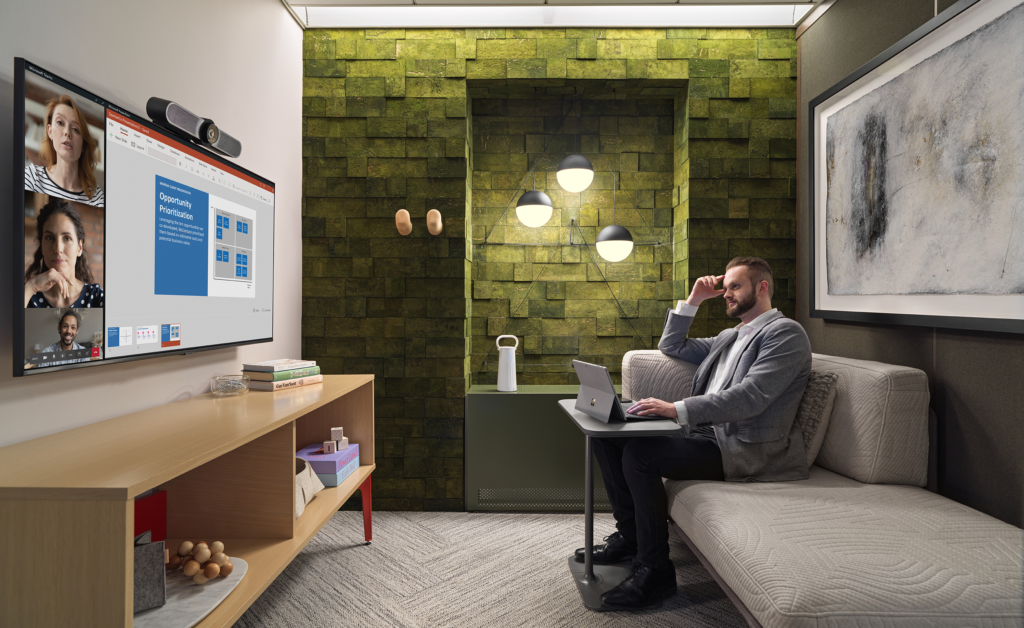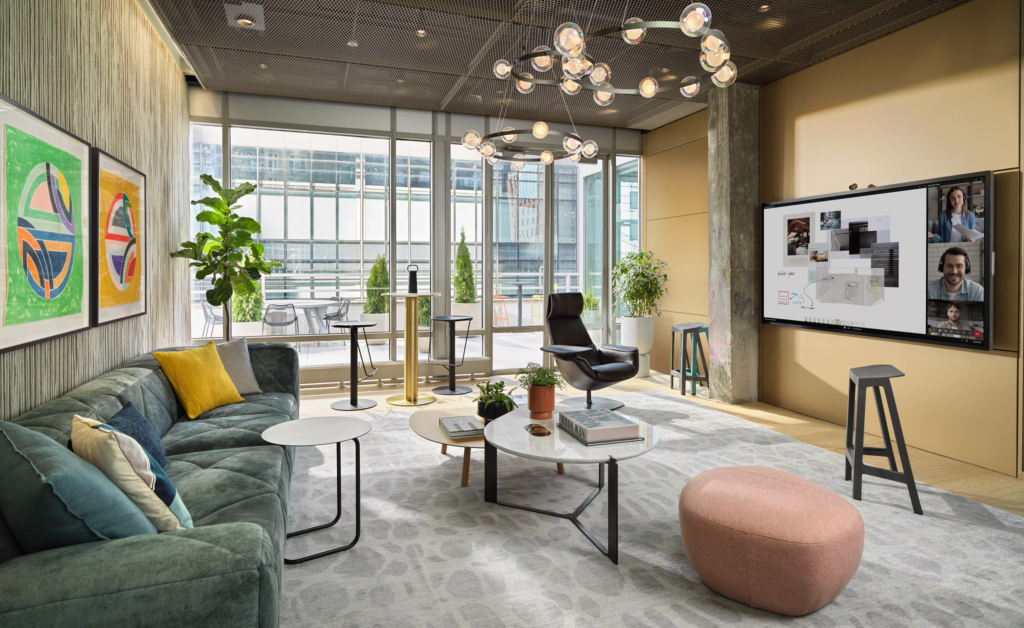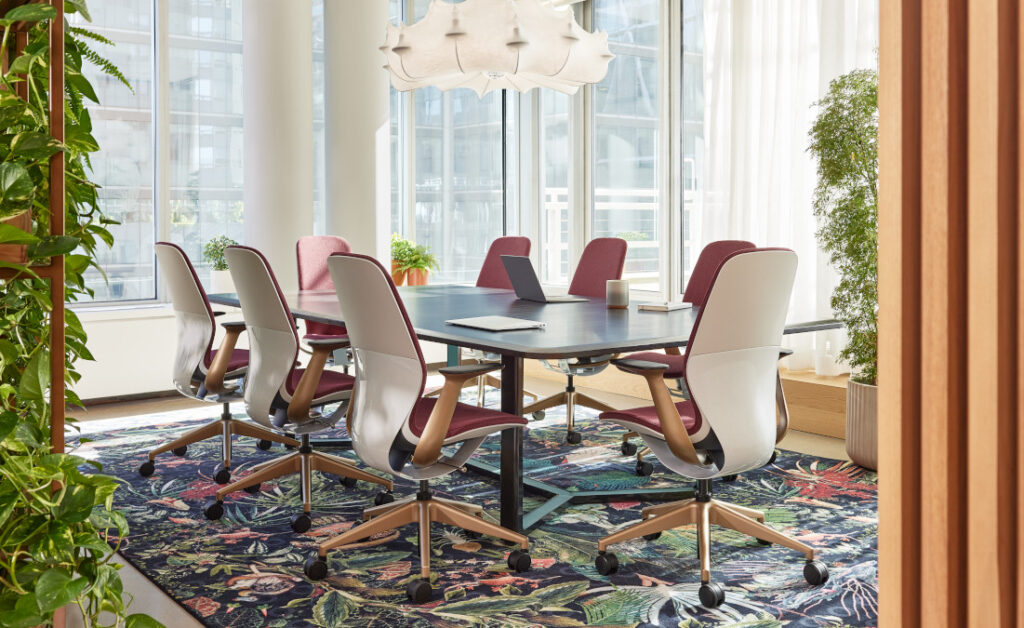The commercial office landscape is ever evolving. Keeping up to date on the best solutions for the workplace can feel overwhelming. That is why we have put together a list of the top six trends in commercial furniture and space design that are shaping modern interiors.
1. Flexible and Adaptable Space
First and foremost, commercial office spaces are moving toward easily adaptable spaces that can support various functions and sizes of teams. With an increased flexibility in how and where people work, these environments better support teams when they are in the office. A great way to create these environments is with modular furniture that can be easily rearranged to suit different needs and posture preferences. Additionally, using furniture that can serve multiple purposes is ideal. For example, incorporate storage that can double as seating.
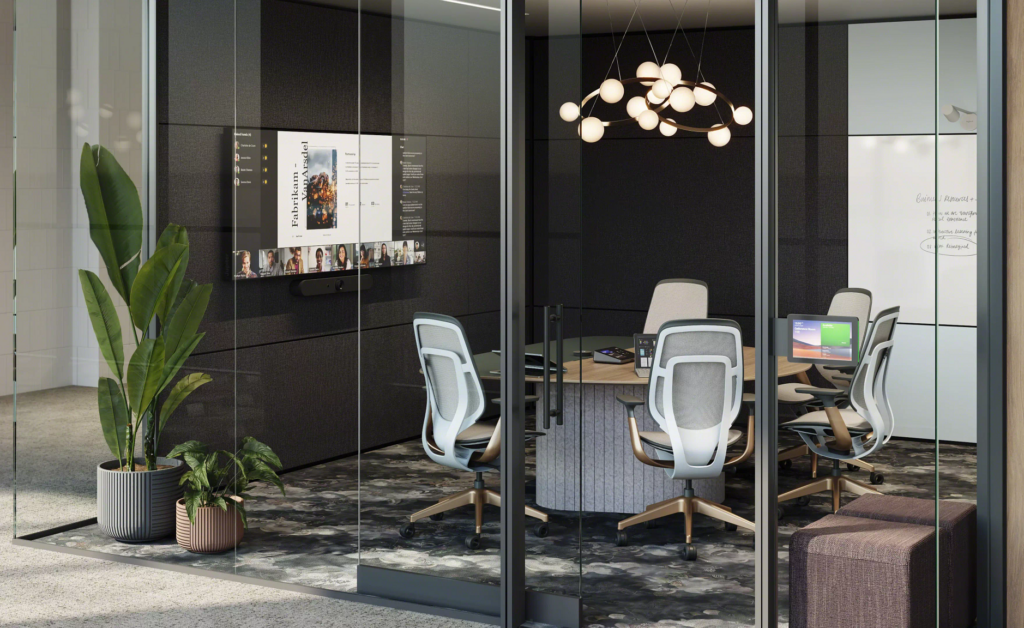
2. Technology Integration
Companies are moving toward automated systems to manage their building’s lighting, temperature, and access. These tools allow them more control over the efficiency of their space saving money and making things more secure. Workplace Analytics systems can help leaders understand which spaces are being used more frequently so they can optimize their real estate.
Additionally, companies are incorporating technologies that support team collaboration and communication. These look like camera bars, intuitive meeting systems and interfaces, better acoustics, and screens. Additionally, furniture that incorporates technology, such as charging stations, or built-in screens is a must. To support all these systems, companies are investing in structured cabling and cable management systems to organize and conceal cables.
3. Sustainable Design
Another trend we see companies follow is a race to make their products greener. This looks like using materials and systems that reduce energy consumption. Some organizations make furniture from recycled materials or designing them to use less materials overall. Others endeavor to improve occupant health by using finishes with low VOCs that emit fewer harmful chemicals.
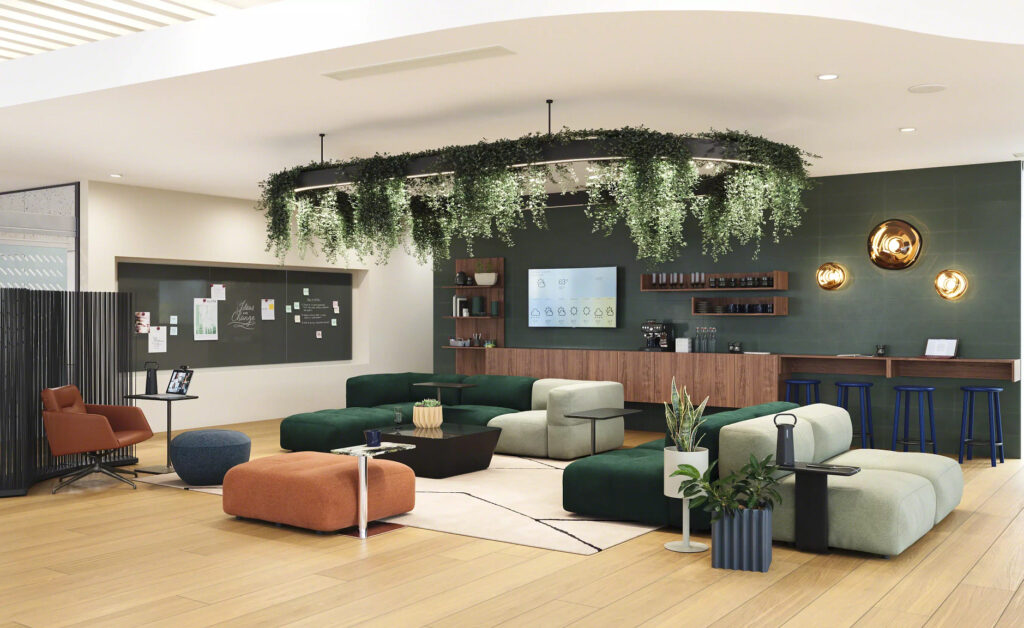
4. Wellness-Focused Design
Similarly, as more people receive poor health diagnoses, making a healthier workplace is a great trend to follow. Companies now must prioritize building offices and incorporating furnishings and materials free of harmful chemicals and toxins. Our environment directly affects health so making sure we are not adding toxins into our environment is critical for good health.
Other ways companies support wellness is by providing ergonomic workstations that promote comfort and prevent injuries. Desks, chairs, and monitors can be adjusted to fit individual needs and promote good posture and movement throughout the day.
Finally, biophilic design has a hugely positive effect on people’s health. By incorporating natural materials, prints, plants, and plenty of natural light, companies can create a more calming and productive environment for their employees.
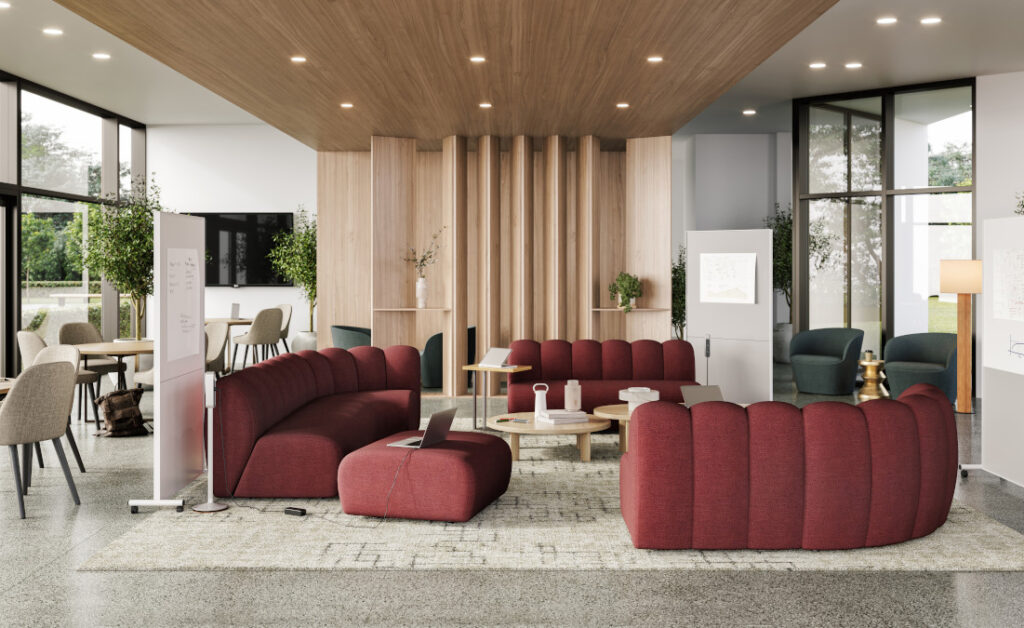
5. Homey Aesthetics
On the design side, offices are taking on more of a residential look and feel. Furniture and decor are being used to create a more comfortable and inviting atmosphere. Teams have access to collaboration and lounge areas that they are allowed to customize. Plush, richly colored furnishings mimic the feel of snuggling up at home. Bold colors and patterns are replacing neutral tones, and uniquely shaped furnishings are making a statement. In general, offices are taking on a homier atmosphere.
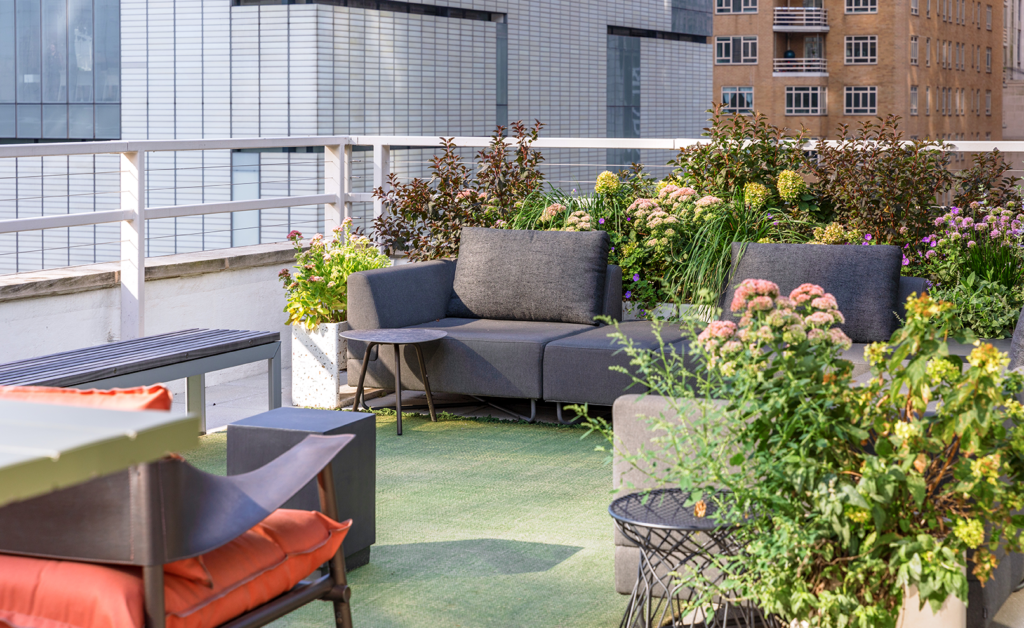
6. Outdoor Spaces
The final trend we have seen is creating outdoor work areas. Since biophilic design improves productivity, it makes sense to create natural environments where employees can get to work. Companies are providing rooftop gardens, patios, balconies, and more to give their workforce a chance to breathe in fresh air and get a change of scenery. Furniture in these areas must be durable and have weather-resistant materials. Meanwhile, they should also be comfortable and stylish so employees will be enticed to use these spaces. (See our thought starters for outdoor spaces.)
By incorporating these trends, businesses can create spaces that are not only visually appealing but also functional, sustainable, and conducive to productivity and employee well-being.
Receive our Newsletter
To receive our newsletter, including new editions of spaces and other digital content, fill out the form:


